Recent progress of sulfide electrolytes for all-solid-state lithium batteries
Abstract
Solid electrolytes are recognized as being pivotal to next-generation energy storage technologies. Sulfide electrolytes with high ionic conductivity represent some of the most promising materials to realize high-energy-density all-solid-state lithium batteries. Due to their soft nature, sulfides possess good wettability against Li metal and their preparation process is relatively effortless. High cell-level sulfide-based all-solid-state lithium batteries have gradually been realized in recent years. However, there are still several disadvantages that sulfide electrolytes need to overcome, including their sensitivity to humid air and instability to electrodes. Herein, the recent progress for sulfide electrolytes, with particular attention given to electrolyte synthesis mechanisms, electrochemical and chemical stability, interphase stabilization and all-solid-state lithium batteries with high cell-level energy density, is presented.
Keywords
INTRODUCTION
The increasing demand for renewable energy has inevitably resulted in higher requirements for energy storage devices. Rechargeable lithium-ion batteries (LIBs) has played a significant role in large-scale energy storage on account of their high energy density[1,2]. However, due to the use of liquid organic electrolytes, combustion, leakage and other safety issues have aroused great concerns[3,4]. All-solid-state lithium batteries (ASSLBs) employing inorganic solid electrolytes instead of liquid electrolytes can effectively solve this dilemma and as a result have received significant attention[5].
Inorganic solid electrolytes are essential for ASSLBs[6,7] and can generally be divided into oxide, sulfide and nitride electrolytes. Among these electrolytes, sulfide electrolytes are considered as some of the most promising candidates because of their high ionic conductivity and suitable mechanical properties[8,9]. In particular, sulfide-based solid electrolytes that possess higher ionic conductivity than that of liquid electrolytes, such as Li9.54Si1.74P1.44S11.7Cl0.3 (2.5 × 10-2 S cm-1), Li6.6Si0.6Sb0.4S5I (2.4 × 10-2 S cm-1) and Li6.7PS5ClBr0.7 (2.4 × 10-2 S cm-1), have been developed[10-12]. Though remarkable progress has been made in recent decades, there are still some challenges for the commercial application of sulfide electrolytes. For instance, they have a narrow electrochemical window, which leads to poor electrochemical compatibility with electrodes[13,14]. Moreover, sulfide electrolytes have inferior chemical stability to humid air, which results in the generation of toxic H2S gas, as well as degradation of the electrolytes[15].
In this review, the recent progress of sulfide electrolytes for ASSLBs is summarized. At first, the synthesis approaches of sulfide electrolytes are discussed systematically. The relationships between the ionic conductivity and crystal structure of sulfide electrolytes are then analyzed, accompanied by a discussion of numerous strategies for improving their ionic conductivity. Moreover, the stability (in terms of electrochemical window and humid air) of sulfide electrolytes is also explored. In particular, the interfacial compatibility between sulfide electrolytes and electrodes (Li metal anodes and oxide cathodes) is described and the corresponding solutions are discussed in detail. The fabrication of thin sulfide electrolyte films for ASSLBs with high cell-lever energy density is also emphasized. Ultimately, we summarize the prospects and consider possible future developments of sulfide electrolytes for ASSLBs.
SYNTHESIS APPROACHES
To date, the synthesis methods of sulfide electrolytes mainly consist of melt-quenching, liquid-phase and mechanical ball-milling approaches.
Melt-quenching approach
Melt quenching is one of the most traditional approaches for the preparation of sulfide glasses. The preparation process involves heating the raw materials at a high temperature and quenching the molten samples in ice water, which is harsh and can easily generate impurities. Minami et al.[16] fabricated
Figure 1. Scanning electron microscopy (SEM) images of Li7P3S11 glass ceramic from (A) cold-pressed and (B) heat-treated samples. (C) Temperature dependency of the resistances of the glass-ceramic material at different conditions. Reproduced with permission[18] (Copyright 2014, Royal Society of Chemistry).
Liquid-phase approach
The developed liquid-phase approach displays large-scale industrial prospects because of its advantages in terms of high efficiency and energy conservation. The raw materials can proceed with a sufficient reaction in solutions and produce homogenous precursors[19]. Furthermore, liquid-phase approaches have been employed to enhance the electrode/electrolyte interfacial contact for improving the performance of the batteries[20]. Nevertheless, residual organic solvents and impurity phases in the samples are inevitable and hinder the transport of Li+, resulting in a decrease in the ionic conductivity of the electrolytes and an increase in activation energy[21]. Li3PS4 is the most stable phase in the Li2S-P2S5 system. Liu et al.[22] employed tetrahydrofuran (THF) as a dispersion medium to synthesize Li3PS4. After removing the THF solvent, the obtained β-Li3PS4 with a nanoporous structure displayed an ionic conductivity of 1.6 × 10-4 S cm-1 and excellent stability against Li metal[22]. Ito et al.[21] prepared crystalline Li7P3S11 by a liquid-phase reaction in a 1,2-dimethoxyethane (DME) organic solvent and its ionic conductivity was 2.7 × 10-4 S cm-1.
Xu et al.[19] applied different organic solvents to synthesize a Li7P3S11 glass-ceramic electrolyte. THF, acetonitrile (ACN) and THF/ACN mixed solvents were used to prepare a Li7P3S11 glass ceramic and the corresponding scanning electron microscopy (SEM) images and electrochemical impedance spectroscopy (EIS) analysis of the electrolyte are displayed in Figure 2A-C. It was found that the Li7P3S11 electrolyte prepared with ACN possessed the highest ionic conductivity (9.7 × 10-4 S cm-1) and the lowest activation energy (31.2 kJ mol-1) among all the candidates[19]. In addition, it was reported by Yubuchi et al.[23] that argyrodite-type Li6PS5X (X = Cl, Br or I) could also be synthesized with the liquid-phase technique. The
Figure 2. SEM images of Li7P3S11 pellets prepared by (A) THF, (B) ACN and (C) THF + ACN, and the matching impedance figures at RT. The equivalent circuit is inserted in the impedance spectrum. Reproduced with permission[19] (Copyright 2016, Elsevier). SEM: Scanning electron microscopy; THF: tetrahydrofuran; ACN: acetonitrile; RT: room temperature.
MECHANICAL BALL-MILLING APPROACH
Mechanical ball-milling is a popular approach for synthesizing sulfide electrolytes due to its simple operation. Raw materials undergo mixing, glassification and crystallization during the process of high-energy milling[25]. Surprisingly, some undiscovered glass materials can be obtained via the ball-milling method[4]. A 75Li2S-25P2S5 (mol%) glass prepared by mechanical milling showed an ionic conductivity of
Figure 3. (A) Ionic conductivity (σ) of Li6PS5I electrolytes vs. milling time. (B) Nyquist plots of Li6PS5I electrolytes for different milling times. Reproduced with permission[28] (Copyright 2021, Wiley-VCH).
The selection of preparation methods is a key factor for determining the properties of sulfide electrolytes. The melt-quenching method requires high operating temperatures and is prone to the generation of impurities. In addition, it is difficult to control the crystallinity of the material obtained by the melt-quenching method. However, the melt-quenching method is easy to operate and is well suited to the preparation of glassy sulfide electrolytes. The liquid-phase approach is suitable for large-scale production. Nonetheless, sulfide electrolytes prepared by the liquid-phase method display inferior ionic conductivities, mainly resulting from the existence of residual organic molecules during the preparation process. Mechanical ball-milling approach enables the reaction precursor to be well mixed. Moreover, some glassy sulfides or glass-ceramic sulfides can be obtained by this method. With the post-annealing treatment, the ionic conductivity and crystallinity of sulfides prepared by the mechanical ball-milling approach will be improved. However, this method is not practical for realistic production. The ionic conductivities of representative sulfide electrolytes prepared by different methods are displayed in Table 1.
Ionic conductivities of representative sulfide electrolytes prepared by different methods
| Material | Conductivity (S cm-1)* | Preparation method | Ref. |
| 70Li2S-30P2S5 glass | 9.2 × 10-5 | Melt quenching | [16] |
| Li2S-P2S5-LiI glass | ~10-3 | Melt quenching | [36] |
| 70Li2S-30P2S5 glass | 8.0 × 10-5 | Melt quenching | [18] |
| β-Li3PS4 | 1.6 × 10-4 | Liquid phase (THF) | [22] |
| Li3PS4 | 2.3 × 10-6 | Liquid phase (N-methylformamide) | [37] |
| Li3PS4 | 3.3 × 10-4 | Liquid phase (ethyl acetate) | [38] |
| Li7P3S11 | 1.0 × 10-3 | Liquid phase (ACN) | [39] |
| Li7P3S11 | 2.7 × 10-4 | Liquid phase (DME) | [21] |
| Li7P3S11 | 9.7 × 10-4 | Liquid phase (ACN/THF/CAN + THF) | [19] |
| Li7P3S11 | 8.7 × 10-4 | Liquid phase (ACN) | [40] |
| Li6PS5Cl | 1.4 × 10-5 | Liquid phase (ethanol) | [41] |
| Li6PS5Cl | 6.0 × 10-5 | Liquid phase (ethanol and ethyl acetate) | [42] |
| Li6PS5Cl | 2.4 × 10-3 | Liquid phase (THF and ethanol) | [43] |
| Li6PS5Br | 1.9 × 10-4 | Liquid phase (ethanol) | [23] |
| Li6PS5Br | 3.9 × 10-3 | Liquid phase (THF and ethanol) | [44] |
| Li5.5PS4.5Cl1.5 | 3.9 × 10-3 | Liquid phase (THF and ethanol) | [43] |
| Amorphous Li3PS4 | 2.0 × 10-4 | High-energy ball milling | [45] |
| Li3PS4 | 1.0 × 10-3 | Mechanical milling | [46] |
| Li7P3S11 | 3.2 × 10-3 | Mechanical milling | [47] |
| Li6PS5Cl | 6.2 × 10-4 | High-energy ball milling | [27] |
| Li6PS5I | 1.9 × 10-4 | High-energy ball milling | [27] |
| Li6.24P0.823Sn0.177S4.58I0.9 | 3.5 × 10-4 | High-energy ball milling | [48] |
| Li5.5PS4.5Cl1.5 | 1.0 × 10-2 | Ultimate-energy mechanical alloying | [25] |
| Li6PS5I | 7.9 × 10-4 | Ultimate-energy mechanical alloying | [28] |
| Li5.6PS4.6I1.4 | 2.0 × 10-3 | Ultimate-energy mechanical alloying | [34] |
| Li2S-P2S5-Li3N glass | 5.8 × 10-4 | Mechanical milling | [26] |
| Li2S-P2S5-Li3N glass ceramic | 1.4 × 10-3 | Mechanical milling | [26] |
| Li10Ge(P0.925Sb0.075)2S12 | 1.7 × 10-2 | Mechanical milling | [49] |
| Li10SnP2S12 | 3.2 × 10-3 | Mechanical milling | [50] |
STRUCTURE AND CONDUCTIVITY OF SULFIDE ELECTROLYTES
Research into sulfide-based electrolytes can be traced back to 1981 with the Li2S-P2S5 system[36]. After considerable efforts, the ionic conductivity of sulfide electrolytes can now match or exceed that of liquid organic electrolytes[10,51]. In this section, the relationship between the structure and ionic conductivity of sulfides, including glasses and glass ceramics, thio-LISICONs, Li11-xM2-xP1+xS12 (M = Ge, Sn or Si) compounds and Li6PS5X (X = Cl, Br or I) argyrodites, is reviewed. A detailed summary of the ionic conductivities and activation energies of sulfide electrolytes with the corresponding structures is presented in Table 2.
Ionic conductivities of representative sulfide electrolytes and the corresponding structures
| Material | Structure | Conductivity (S cm-1)* | Ea (eV) | Ref. |
| Li3PS4 | Glass | 2.0 × 10-4 | 0.35 | [45] |
| 0.4LiI-0.6Li4SnS4 | Glass | 4.1 × 10-4 (30 °C) | 0.43 | [52] |
| Li2S-P2S5-LiI | Glass | ~10-3 | 0.30 | [36] |
| Li7P3S11 | Glass ceramic | 1.7 × 10-2 | 0.18 | [18] |
| Li7P2.9Sb0.1S10.75O0.25 | Glass ceramic | 1.6 × 10-3 | 0.28 | [53] |
| Li5.6PS4.6I1.4 | Glass ceramic | 2.0 × 10-3 | 0.31 | [34] |
| Li6.5In0.25P0.75S5I | Glass ceramic | 1.0 × 10-3 | 0.28 | [28] |
| Li7Ag0.1P3S11I0.1 | Triclinic | 1.3 × 10-3 | 0.23 | [54] |
| Li9.6P3S12 | Tetragonal | 1.2 × 10-3 | 0.26 | [10] |
| Li4SnS4 | Orthorhombic | 7.0 × 10-5 | 0.41 | [55] |
| Li3.334Ge0.334As0.666S4 | Orthorhombic | 1.1 × 10-3 | 0.17 | [56] |
| Li3.25Ge0.25P0.75S4 | Monoclinic | 2.2 × 10-3 | 0.21 | [57] |
| Li10GeP2S12 | Tetragonal | 1.2 × 10-2 | 0.25 | [51] |
| Li10SnP2S12 | Tetragonal | 4.0 × 10-3 (27 °C) | 0.27 | [58] |
| Li10SiP2S12 | Tetragonal | 2.0 × 10-3 (27 °C) | 0.30 | [59] |
| Li10Si0.3Sn0.7P2S12 | Tetragonal | 8.0 × 10-3 | 0.29 | [59] |
| Li10Ge(P0.925Sb0.075)2S12 | Tetragonal | 1.7 × 10-2 | 0.27 | [49] |
| Li5.5PS4.5Cl1.5 | Cubic | 9.4 × 10-3 | 0.29 | [33] |
| Li6.7Si0.7Sb0.3S5I | Cubic | 1.1 × 10-2 | 0.26 | [11] |
| Li5.3PS4.3ClBr0.7 | Cubic | 2.4 × 10-2 | 0.155 | [12] |
| Li6.25PS4.75N0.25Cl | Cubic | 1.5 × 10-3 | 0.26 | [60] |
| Li6.3P0.7Sn0.3S4.4O0.6I | Cubic | 2.3 × 10-4 (30 °C) | 0.32 | [61] |
Sulfide glasses
The conduction pathways of sulfide glasses are isotropic and the grain boundary resistances are easy to eliminate. Therefore, sulfide glasses are generally considered to possess higher ionic conductivity than their corresponding crystalline materials. A detailed investigation of xLi2S-(100-x)P2S5 (mol%) binary systems with different Li2S fractions was carried out by Dietrich et al.[62] and Hayashi et al.[45] The results showed a single glass phase can form between x = 0.4 and 0.8. Furthermore, the relationship between the local structure of the thiophosphate building blocks and the ionic conductivity was revealed in their work. As represented in Figure 4, a continuous change can be observed from dominant di-tetrahedral P2S74- to mono-tetrahedral PS43- with increasing Li2S content. The 75Li2S-25P2S5 glass material with only PS43- tetrahedra delivered the highest ionic conductivity of 2.8 × 10-4 S cm-1 at RT. Moreover, xLi2S-(100-x)SiS2 and
Figure 4. Raman and 31P magic angle spinning-nuclear magnetic resonance (MAS-NMR) spectra of xLi2S-(100-x)P2S5 glasses with different Li2S contents. Reproduced with permission[62] (Copyright 2017, Royal Society of Chemistry).
Doping lithium salts into glass electrolytes is a common method to enhance the Li+ carrier concentration and thus improve the ionic conductivity of glasses. The addition of small amounts of LixMOy (e.g., Li4SiO4, Li3BO3, Li3GeO4 and Li3PO4) in xLi2S-(100-x)SiS2 glass materials can enhance their stability against crystallization and maintain the level of ionic conductivity at ~10-3 S cm-1[65,66]. In addition, LiX (X = Cl, Br or I) is usually applied to enhance the ionic conductivity of glasses. For instance, the Li2S-B2S3-LiI and
Sulfide glass ceramics
Glass ceramics consist of amorphous and crystalline phases, which are usually prepared through heat treatment of the glass phase. The types of crystals formed depend on the composition of the glass and the conditions of the heat treatment. Currently, research into glass-ceramic electrolytes is mainly focused on the Li2S-P2S5 system. Different crystalline phases are generated in xLi2S-(100-x)P2S5 (mol%) glass materials depending on the x value, as displayed in Figure 5[70]. For instance, at x < 70 mol%, the formation of Li2P2S6 or Li4P2S6 phases with low ionic conductivity decreases the overall conductivity of the glass ceramic[71,72]. However, for x ≥ 70 mol%, the crystalline phases of Li3.25P0.95S4 and Li7P3S11 with high ionic conductivity precipitate in the glass materials and significantly increase the ionic conductivity[29,31,73]. Very recently, a high-energy ball-milling method was utilized to produce glass-ceramic electrolytes in a one-pot process. The prepared glass ceramics displayed an ionic conductivity of ~10-3 S cm-1[27,34,74].
Figure 5. Different crystalline phases generated within the Li2S-P2S5 binary system. Reproduced with permission[70] (Copyright 2018, Elsevier).
Nonetheless, the appearance of the crystallization region leads to an increase in the grain boundary impedance. To improve the conductivities of glass-ceramic materials, Seino et al.[18] performed a hot-pressing process to eliminate the grain boundaries in 70Li2S-30P2S5 glass ceramics. The obtained electrolytes showed a superior conductivity of 1.7 × 10-2 S cm-1. In addition, a doping strategy was used to enhance the ionic conductivity of glass ceramics. It was reported by Xu et al.[35] that replacing P5+ with Mo4+ ions could not only generate point defects to improve the ionic conductivity but also broaden the Li+ transport channels. As a consequence, the Mo-doped 70Li2S-30P2S5 glass-ceramic electrolyte represented a high ionic conductivity of 4.8 × 10-3 S cm-1[35]. Mn and I co-doping was also applied in their later work to optimize the Li7P3S11 glass ceramic. The prepared Li7P2.9Mn0.1S10.7I0.3 glass-ceramic electrolyte possessed a high ionic conductivity (5.6 × 10-3 S cm-1) and a wide electrochemical window (up to 5 V)[75].
SULFIDE CRYSTALLINE ELECTROLYTES
Thio-LISCIONs
The thio-LISICON structures found in the Li2S-GeS2, Li2S-GeS2-Ga2S3 and Li2S-GeS2-ZnS systems were derived from a LISICON-type γ-Li3PO4 electrolyte by replacing O with S[76]. S possesses lower electronegativity and a larger radius than O, and is therefore capable of reducing the Li+ binding energy and broadening the Li+ migration channels. Therefore, thio-LISICON electrolytes are expected to have higher ionic conductivity than oxide electrolytes[13,51]. Six materials [Li4GeS4, Li2GeS3, Li2ZnGeS4, Li4-2xZnxGeS4,
A more detailed investigation of the thio-LISICON structure was carried out for the Li2S-GeS2-P2S5 system. Kanno et al.[57] obtained Li4-xGe1-xPxS4 (0 < x < 1) by partial substituting Ge4+ with P5+ in the Li4GeP4 electrolyte. The aliovalent P doping could introduce lithium vacancies into the crystal structure to improve the ionic conductivity significantly. As displayed in Figure 6A and B, the crystal structure is based on the parent structure of Li4GeS4. The X-ray diffraction (XRD) pattern illustrated that Li4-xGe1-xPxS4 (0 < x < 1) electrolytes could be regarded as a solid solution between γ-Li3PS4 and Li4GeS4[2]. According to the appearance of superlattice reflections, the Li4-xGe1-xPxS4 (0 < x < 1) system can be divided into three types, namely, the orthorhombic thio-LISICON I region (0 < x ≤ 0.6), the monoclinic thio-LISICON II region
Figure 6. (A) Structure of thio-LISICON based on the parent structure of Li4GeS4. (B) XRD patterns of Li4-xGe1-xPxS4. Reproduced with permission[2] (Copyright 2019, Wiley-VCH). XRD: X-ray diffraction.
Figure 7. LISICON and thio-LISCION family maps with listed lithium-ion conduction mechanisms and ionic conductivity values. Reproduced with permission[57] (Copyright 2001, Electrochemical Society).
Li11-xM2-xP1+xS12 (M = Ge, Sn or Si)
In order to achieve ASSLBs with high energy density, it is essential to develop a sulfide electrolyte with ultrahigh ionic conductivity. The tetragonal Li10GeP2S12 (LGPS) electrolyte with a brand-new three-dimensional (3D) framework structure was reported by Kamaya et al.[51] in 2011. LGPS is the first sulfide electrolyte that exhibits an extremely high ionic conductivity (1.2 × 10-2 S cm-1) comparable to that of liquid organic electrolytes. As exhibited in Figure 8, the ternary LGPS electrolyte is composed of (Ge0.5P0.5)S4 tetrahedra, PS4 tetrahedra, LiS4 tetrahedra and LiS6 octahedra. The (Ge0.5P0.5)S4 tetrahedra and LiS6 octahedra form a one-dimensional (1D) Li+ conduction framework along the c axis by sharing a common edge. These 1D chains are interconnected via PS4 tetrahedra, which share a common corner with the LiS6 octahedra. Furthermore, the 1D Li+ conduction channel consists of LiS4 tetrahedra sharing a common edge in the 16h and 8f sites[51].
Figure 8. Crystal structure of Li10GeP2S12. Reproduced with permission[51] (Copyright 2011, Springer Nature Publishing AG).
It was speculated that the Li ions in LGPS migrate through 1D diffusion pathways along the c axis. However, further investigation into the LGPS electrolyte by advanced characterization techniques and density functional theory (DFT) calculations overturned this suggestion. A variety of complementary techniques were employed by Kuhn et al.[81] to characterize the structure and Li+ dynamics of the LGPS electrolyte. No strong anisotropic signs of diffusivity were found in the material. Therefore, it was concluded that the exceptionally high ionic conductivity of LGPS electrolyte should be attributed to nearly isotropic Li hopping processes in the bulk lattice with an Ea value of ~0.22 eV[81]. Also, it was demonstrated by Mo et al.[82] that the LGPS electrolyte is a 3D conductor rather than a 1D conductor. The reason is that 1D conductors cannot maintain good conductivity due to inevitable channel blocking defects. Thus, some crossover between 1D channels is required to bypass these defects[83].
Unfortunately, the high cost of Ge raw materials hinders the application of the LGPS electrolyte. Replacing Ge with low-cost elements (e.g., Sn or Si) is an effective approach to reduce the production costs of LGPS. A Li10(Ge1-xMx)P2S12 (M = Sn or Si) mixed cation system was synthesized by Kato et al.[84] to evaluate the effect of Sn and Si substitution. It was found that Sn and Si substitution reduces the ionic conductivity of the system, indicating that the lattice volume is not the only factor that affects the ionic conductivity[84]. The Sn analog Li10SnP2S12 electrolyte displayed an ionic conductivity of 7 × 10-3 S cm-1, in good agreement with theoretical calculations. The Li10SiP2S12 electrolyte was expected to possess an enhanced ionic conductivity (2.3 × 10-2 S cm-1) and lower activation energy (0.20 eV) compared to the pristine LGPS electrolyte according to theoretical calculations[85]. However, the experiment results demonstrated that crystalline Li10SiP2S12 only has a low ionic conductivity of 2.3 × 10-3 S cm-1[86]. The reason behind this contradiction has not yet been revealed. Furthermore, in the LGPS family, two newly prepared electrolytes, namely, Li10.35Si1.35P1.65S12 and Li9.54Si1.74P1.44S11.7Cl0.3, exhibit ultrahigh ionic conductivities of 2.0 × 10-2 and 2.5 × 10-2 S cm-1, respectively[10,87].
Li6PS5X (X = Cl, Br or I)
Ag8GeS6 is the first known solid electrolyte with an argyrodite structure (space group F4̅3m). The Ag8GeS6 electrolyte has a high ionic conductivity and mobility of Ag+ ions due to its highly disordered cation arrangements[88]. The Ag+ ions in this electrolyte can be substituted by Cu+ ions and the argyrodite structure is still maintained[89]. Considering that the ionic radii of Li+ (73 ppm) and Cu+ (74 ppm) are similar, Li6PS5X (X = Cl, Br or I) electrolytes were proposed by substituting Cu+ with Li+ and substituting Ge4+ with P5+ and
Figure 9. (A) Crystal structure of Li6PS5X (X = Cl, Br or I). (B) Li positions forming localized cages in which multiple jump processes are possible. Reproduced with permission[90] (Copyright 2017, American Chemical Society).
Numerous studies have shown that the differences in ionic conductivity in argyrodite-type electrolytes originate from the different degrees of S2-/X- anion disorder. In Li6PS5Cl and Li6PS5Br, the S2- and Cl-, or S2- and Br- ions, at the 4a and 4c sites are partially disordered because of their relatively close ionic radii[93]. However, the large I- ions can only occupy the 4a sites and are not able to swap with S2- ions at the 4c site, thus resulting in a fully ordered anion framework[94]. The Li6PS5Cl and Li6PS5Br electrolytes with various
Therefore, considerable efforts have been made to improve the ionic conductivity by increasing the degree of site disorder. It was discovered by Zhao et al.[48] that replacing P5+ with larger cations not only broadens the unit cell but also induces site disorder, which is conducive to the transport of Li+. By substituting Sn, the optimized Li6.24P0.823Sn0.177S4.58I0.9 electrolyte delivered a high ionic conductivity of 3.5 × 10-4 S cm-1, which was 125 times higher than that of the pristine Li6PS5I electrolyte[48]. The influence of Ge substitution on
Furthermore, increasing the halogen content in Li6PS5X (X = Cl, Br or I) electrolytes can also effectively improve the anion disorder and enhance their ionic conductivity[34,98,99]. The argyrodite Li5.3PS4.3Cl1.7 and
STABILITY OF SULFIDE ELECTROLYTES
Electrochemical stability window
In addition to ionic conductivity, the electrochemical stability window of sulfide electrolytes is a crucial factor that affects the overall performance of sulfide-based ASSLBs. The decomposition of sulfide electrolytes results in high interfacial resistance and reduces the capacity of the batteries. Initially, the electrochemical stability window of sulfides was measured by cyclic voltammetry. Early experiments demonstrated that most sulfide electrolytes possess a remarkable electrochemical stability window up to 5 V vs. Li metal[27,75,101,102]. For instance, the electrochemical window of Li6PS5X (X = Cl, Br or I) argyrodites was characterized by Boulineau et al.[27] with a Li/BM-Li6PS5X/stainless steel cell. There was a total absence of any electrochemical response, which illustrated that the Li6PS5X (X = Cl, Br or I) electrolytes could remain stable at a voltage of 0.5-7 V vs. Li metal[27]. Moreover, by applying a similar testing method, the iodide-based Li7P2S8I electrolyte and the oxygen-substituted Li10GeP2S11.4O0.6 electrolyte were discovered to display a stable electrochemical window up to 10 V vs. Li metal[101,102].
In contrast, recent studies have suggested that the electrochemical windows of sulfide electrolytes were overestimated because the poor contact between the inert metal and solid electrolyte limits the reaction kinetics and hinders the mobility of Li+[103,104]. DFT calculations were applied by Mo et al.[101] and Bai et al.[102] to predict the electrochemical windows of typical sulfides. It was found that sulfides display much narrower electrochemical windows than previously suggested experimentally, as displayed in Figure 10[105,106]. A new Li/electrolyte/electrolyte-carbon cell configuration was proposed by Han et al.[103] to correct the discrepancy between the theoretical calculations and experimental measurements. Mixing an electrolyte and carbon could increase the overall electronic conductivity of electrodes, which was beneficial for amplifying the decomposition current signal and reflecting the intrinsic electrochemical windows of sulfide electrolytes. Based on cycling voltammetry of the Li/LGPS/LGPS-C/Pt cell, it was found that the LGPS electrolyte would be reduced at 1.7 V and oxidized at 2.1 V, consistent with the theoretical calculation results[103].
Figure 10. Calculated electrochemical stability windows for a variety of solid electrolytes. The dashed lines mark the oxidation potentials to fully delithiate the material. Reproduced with permission[106] (Copyright 2015, American Chemical Society).
Chemical stability in humid air
The chemical stability against humid air is another concern regarding the application of sulfide electrolytes. Most sulfide electrolytes suffer from poor moisture stability and generate toxic H2S gas upon contact with humid air. Therefore, the common preparation process of sulfide electrolytes is usually under the protection of inert gas (argon). Numerous surveys of the moisture stability of sulfide electrolytes have been carried out. For example, the air stability of the Li6PS5Cl electrolyte was characterized with XRD measurements. Several clear impurity peaks could be observed after exposing the Li6PS5Cl electrolyte to humid air for 10 min and its ionic conductivity deteriorated from 1.8 × 10-3 S to 1.56 × 10-3, 1.43 × 10-3 and 8.7 × 10-4 S cm-1 after exposure to air for 10 min, 1 h and 24 h, respectively[107]. The chemical stability of sulfide electrolytes in the Li2S-P2S5 system was also investigated by Muramatsu et al.[108] in humid atmosphere. There was no obvious structure change in the PS43- ions after exposure to air, while the S2- and P2S74- ions displayed a clear structural change and significant amounts of toxic H2S gases were generated. As a consequence, a conclusion was drawn that PS43- ions possess higher chemical stability compared to other phosphate ions[108].
The hard-soft-acid-base theory has been proposed by Liang et al.[49] to explain the poor chemical stability of sulfide electrolytes and has been applied to inhibit their deterioration. In P-containing sulfide electrolytes, the hard acid (P) tends to bond with the hard base (O) in humid air to form P-O bonds rather than maintaining the pristine P-S bonds. Furthermore, S atoms tend to bond with the H atoms in humid air, resulting in the generation of H2S. Therefore, replacing the soft base (S) with a hard base (O) or replacing the hard acid (P) with a soft acid is a feasible approach to improve the air stability of sulfide electrolytes according to the hard-soft-acid-base theory. Based on this, many successful experiments for improving the air stability of sulfides have been reported[48,49,109]. In the Li2S-P2S5 glass electrolytes, substituting partial P2S5 with P2O5 could effectively reduce the release rate of H2S gas, illustrating that the air stability of electrolytes was improved with O substitution[109]. In addition, replacing hard acid (P) with soft acid (Sb, Sn and so on) was a good choice to enhance the air stability[48,49]. Liang et al.[49] investigated the effect of Sb substitution in Li10Ge(P1-xSbx)2S12 electrolytes. As depicted in Figure 11A and B, Sb prefers to substitute P at the 4d site. It was discovered that there was no appearance of additional or broadening peaks after exposing the Sb-substituted electrolytes to humid air for 24 h. In addition, theoretical calculations and experimental tests demonstrated that Sn-substituted Li6PS5I electrolytes possessed better air stability than the pristine Li6PS5I electrolyte because of the stronger Sn-S bonds[48].
Figure 11. (A) Crystal structure of Li10Ge(P0.925Sb0.075)2S12. (B) XRD patterns of Li10Ge(P0.925Sb0.075)2S12 sample before and after air exposure. Reproduced with permission[49] (Copyright 2020, American Chemical Society). XRD: X-ray diffraction.
SULFIDE ELECTROLYTE/LI METAL ANODE INTERFACE
Challenges for the sulfide electrolyte/Li metal anode interface
Interfacial side reactions and Li dendrites are two concerns that have plagued the development of liquid-state lithium-metal batteries for a long time[110]. These issues also exist when applying lithium metal as the anode in an ASSLBs[111,112]. Similar to typical sulfide electrolytes, high-valent cations in anion clusters, such as P5+, Ge4+, Sn4+ and so on, can easily react with Li metal [Figure 12B], resulting in an enhancement in Ohmic resistance and a decrease in Coulombic efficiency (CE)[113]. Theoretically, dendrite growth should be prohibited in solid electrolytes for the reason that the bulk modulus of solid electrolytes is higher than that of Li metal. However, the issue of dendrites tends to be severer in ASSLBs[114,115]. The theory of dendrite growth in solid electrolytes is diverse and is introduced in detail below. Unlike liquid electrolytes, which can directly wet the electrodes, the solid/solid contact in ASSLBs is not satisfactory. Although sulfide electrolytes display a better contact than oxide electrolytes, the contact loss at the sulfide electrolyte/anode interface during Li stripping/plating enlarges the local current density and leads to rapid dendrite growth[116].
Figure 12. (A) Types of interfaces between lithium metal and a solid lithium ion conductor: (I) a non-reactive and thermodynamically stable interface; (II) a reactive and mixed conducting interphase; (III) a reactive and metastable solid-electrolyte interphase (SEI). Reproduced with permission[117] (Copyright 2015, Elsevier). (B) Decomposition energy ED of sulfide electrolyte as a function of applied voltage Li. Reproduced with permission[106] (Copyright 2015, American Chemical Society). (C) First-principles calculation results of the voltage profile and phase equilibria of LGPS during lithiation and delithiation. Reproduced with permission[103] (Copyright 2016, Wiley-VCH). (D) Schematic of Li metal/Li6PS5Cl interface cycled at an overall current density above the CCS. Reproduced with permission[116] (Copyright 2019, Springer Nature Publishing AG).
Interfacial reactions
Li metal has the lowest reduction potential (-3.04 V vs. SHE), which means it has excellent potential in the application of energy storage systems. However, the low reduction potential of Li metal also indicates that the interfacial reactions between an electrolyte and Li metal are almost inevitable. Typically, in organic electrolyte research, Li metal is oxidized by solvents or Li salts to form an SEI, which can protect Li metal from further corrosion. In solid electrolytes, the property of the interphase is more complex.
Three types of Li/solid-state electrolyte interphase have been identified according to the mainstream theory [Figure 12A][117]. Type I includes all the thermodynamically stable solid electrolytes against Li metal. In this case, no interfacial reactions occur. For instance, several researchers have reported that LIPON and Li are in thermodynamic equilibrium. Unfortunately, sulfide electrolytes are included this type because their anionic clusters are easily reduced by Li metal.
The type II interphase is unique and arises from the reaction between Li and solid electrolytes containing metal ions. The reaction products consisting of electronic conductors (Li alloys) and ionic conductors continue to react with electrolytes. The so-called mixed conducting interphase is common in sulfide electrolytes. During the cycling of Li || LGPS || Li symmetric cells, the voltage polarization keeps rising due to continuous side reactions. By analyzing the X-ray photoelectron spectroscopy (XPS) spectra of the
For type III, the interphase reaction still occurs between Li and solid electrolytes but the reaction products that are thermodynamically stable against Li could prevent the reaction from proceeding. This type of interphase plays a similar role as the SEI. For example, Li6PS5Cl and Li react to form Li2S, Li3P and LiCl[60,116]. The resistance of Li-Li symmetric cells incorporated with Li6PS5Cl does not continue to increase because the reaction products of Li and Li6PS5Cl are rather stable against Li. The side reactions between Li and electrolytes lead to a drop in CE and present a bottleneck in the development of high-energy-density Li-metal batteries (LMBs). In particular, for sulfide electrolytes containing relatively unstable anionic clusters, the interphase of type II should be avoided and the influence of type III should be limited to a certain level.
Li dendrites
Li dendrites are central factors that hinder the commercial application of LMBs. These needle-like crystals pierce the membrane and cause short-circuit to the whole-cell effortlessly[119]. Thermodynamically, the growth regimes of dendrites are linked with the intrinsic energetic properties of metal surfaces[120]. Therefore, the epitaxial and mossy growth of bare Li during the electrochemical process is inevitable.
Ideal solid electrolytes with high ionic conductivity and no electronic conductivity are proposed to take the place of traditional membranes and liquid electrolytes in LMBs. Compared to soft and porous membranes, ideal solid electrolytes possess high bulk moduli and are obviously denser after applying pressure[121]. Moreover, it is well known that the organic electrolytes utilized in liquid-state LMBs are combustible, yet the ignition points of solid electrolytes are much higher. Although, this initially inspired significant research into the commercialization of ASSLBs, the dendrite problem is not solved by solid electrolytes[115,122]. Recently, the growth of Li dendrites in solid electrolytes was clearly displayed by a high-resolution in-situ optical microscope, implying that solid electrolytes still had the conditions for dendrite growth[122]. By experimental observation, the voids in solid electrolytes provide a suitable environment for Li dendrites to grow. Furthermore, it has been reported that the grain boundaries of solid electrolyte may support dendrite growth due to their different nature from the bulk crystal[115,123,124]. Recently, Han et al.[125] tested the electronic conductivity of typical oxide, LIPON, and sulfide electrolytes and found that the role of electronic conductivity in dendrite growth could not be ignored. Neutron depth profiling was also applied to visualize dendrite growth. By correlating the critical current densities with electronic conductivity, they proposed a criterion where the electronic conductivity of the solid electrolyte should be considered when designing practical solid electrolytes.
Contact loss at the sulfide/anode interface
Solid-solid contact remains a key issue in ASSBs. Sulfide electrolytes, due to their soft characteristics, possess good interphase compatibility with Li metal. The pellets of sulfide electrolytes can be directly assembled into cells without any treatment. However, during the process of Li stripping/plating, the interphase initially in close contact becomes loose. The explanation for this phenomenon can be briefly concluded by the rate of Li creeping. Pits and holes form when Li is stripped from the bulk. These pits and holes can be filled to some extent by the creeping of Li metal, but the reality is that the rate of Li creeping is far lower than the rate of Li stripping. Thereafter, the next Li plating process is affected by the existence of pits and holes, resulting in insufficient contact between the Li and sulfide electrolytes. Therefore, when the external current density is constant, the contact loss between sulfide electrolytes and Li metal leads to an exponential rise in local current density at the contact point of the sulfide and Li metal.
According to Sand’s theory, the rate of dendrite growth is positively related to current density[126]. It is not arduous to draw the conclusion that the contact loss of sulfide/Li interphase plays a major role in the failure of ASSLBs. Kasemchainan et al.[116] carried out detailed research on the relationship between the morphology of the interphase and cell performance. Via characterization of cross-sectional SEM and in situ X-ray computed tomography, voids were shown to form after several stripping cycles. Though the process of Li plating could decrease the number of voids, some occluded voids still existed when the current density was above the critical stripping current. After further stripping, the voids grow and the contact loss at the Li/sulfide interphase is severer. Once the local current density is above the threshold for dendrite formation, short circuit and cell failure occur as a result [Figure 12D]. The contact loss of the sulfide/Li interphase may be the reason that dendrite problems have still not been solved in sulfide-based ASSBs.
Strategies to stabilize the sulfide electrolyte/Li metal anode interface
Benefiting from our successful experience and methods in liquid-state Li-metal batteries and sodium-ion batteries[127-129], improving the interphase compatibility between sulfides and Li metal is achievable[130,131]. So far, the strategies to stabilize the sulfide/Li metal interphase can be considered as tuning the composition of sulfide electrolytes or anodes and constructing an artificial SEI or interlayer[2,132]. Although none of these methods thoroughly solve the dilemma of interphase incompatibility, the theory and experience generated during the process of inquiry are certainly worthwhile. A summary of the performance of Li-Li symmetric cells using sulfide electrolytes is given in Table 3.
Summary of the performance of Li-Li symmetric cells using sulfide electrolytes
| No. | Cell configuration | Critical current density (mA cm-2) | Cut-off capacity | Test temperature | Ref. |
| 1 | Li/Li6.3P0.9Cu0.1S4.9Cl1.1/Li | 3.0 | 3.0 | 50 °C | [133] |
| 2 | Li/Li6.25PS4.75ClN0.25/Li | 1.52 | 1.52 | RT | [60] |
| 3 | Li/Li6PS5Cl0.3F0.7/Li | 6.37 | 5.0 | RT | [134] |
| 4 | Li/0.7(Li2S-P2S5)-0.3LiI/Li | 3.9 | 3.9 | 100 °C | [135] |
| 5 | Li/G-LGPS-G/Li (50 MPa) | 10.0 | 0.25 | RT | [136] |
| 6 | Li/Li7P2.88Nb0.12S10.7O0.3/Li | 1.16 | 1.16 | RT | [8] |
| 7 | Li/Li3N-LiF//Li3PS4//Li3N-LiF/Li | 6.0 | 6.0 | RT | [137] |
| 8 | Li/LiMg22/LGPS/LiMg22/Li | 1.3 | 1.3 | RT | [138] |
| 9 | Li/LiFSI@Li3PS4/Li | 2.0 | 2.0 | RT | [121] |
| 10 | Li-Bp-DME/Polyoxyethylene (PEO)/Li3PS4/PEO/Li-Bp-DME | 17.78 | 17.78 | 30 °C | [139] |
| 11 | Li/Graphite-Li6PS5Cl-LGPS-Li6PS5Cl-Graphite Li | 20.0 | 0.25 | 55 °C | [140] |
| 12 | Li/Li7P3S11/Li | 0.76 | 0.76 | RT | [141] |
| 13 | Li/0.75Li2S-0.25P2S5/Li | 0.4 | 0.4 | RT | [135] |
| 14 | Li/0.6Li2S + 0.32SiS2 + 0.12PS5/2/Li | 1.50 | 1.50 | RT | [142] |
| 15 | Li/Li6PS4.7O0.3Br/Li | 0.90 | 0.90 | RT | [143] |
| 16 | Li/Li6PS5Cl/Li | 0.55 | 0.55 | RT | [144] |
| 17 | Li/Li7P2.9Si0.05S10.85/Li | 0.80 | 0.80 | RT | [141] |
Composition tuning of sulfide electrolytes
According to Sand’s theory, the origin of dendrite growth starts from uneven Li deposition[126]. In ASSLBs, promoting the rate of Li diffusion could release the Ohmic polarization. On this basis, a more homogenous Li deposition can be realized. Considering that interfacial side reactions are closely related to the properties of sulfide electrolytes, the targets for the composition tuning of sulfides should not only focus on enhancing the ionic conductivity. Indeed, improving the diffusion rate of Li+ could somehow promote a more homogenous Li+ flux during Li plating/stripping, but sulfide electrolytes doped with high-valent metal ions can form an unstable mixed conductive interphase. Hence, maintaining high ionic conductivity while decreasing the overall side reactions represents a conventional route for modifying the composition of sulfide electrolytes to obtain better anodic stability[145].
The investigation of Li/sulfide interphases by XPS and the calculation of the grand potential phase diagram have proved that sulfur anion clusters centered on high-valent cations (e.g., PS43-, BS45-, SiS44-, GeS44- and so on) are responsible for side reactions[146]. For non-metal high-valent cations with less reduction activity, replacing partial S atoms with O atoms could decrease the side reactions. A theoretical phase diagram study proposed that Li3PO4 is metastable against Li metal[147]. Thus, Tao et al.[30] added certain amounts of P2O5 into 75Li2S-25P2S5 glass-ceramic electrolytes to improve the ionic conductivity and anodic stability. It was discovered that the glass-ceramic electrolytes substituted with 1 mol% P2O5 had good electrochemical performance. The Li||Li symmetric cells incorporated with modified electrolytes displayed a lower polarization and longer cycling life than the cells using 75Li2S-25P2S5 glass-ceramic electrolytes at a current density of 0.1 mA cm-2 and a cutoff capacity of 0.1 mAh cm-2, indicating that both the side reactions and dendrite growth were suppressed. Ideally, the side reactions between sulfide electrolytes and Li metal should be eliminated. However, with the existence of sulfur anion clusters centered on high-valent cations, prohibiting the decomposition of sulfide electrolyte in anodic sides by tuning its composition is almost impossible. Thus, it is worthy of consideration to select a proper doping component that can generate a robust passivation layer on the surface of Li metal.
LiX (X = F, Cl, Br or I) is widely used as a dopant in sulfide electrolytes due to its mechanical and electronical properties[90]. Han et al.[135] introduced different amounts of LiI into a 75Li2S-25P2S5 glassy system to regulate its reactivity and ionic conductivity. The glass electrolyte with a composition of
LiF is an essential component in traditional LIBs to stabilize the interphase. By DFT calculations, it was reported that LiF possesses a strong ability to suppress dendrite growth. Though the ionic conductivity of bulk LiF is relatively low, researchers have found that nano-LiF distributed in the interphase displayed a satisfactory ionic conductivity[148]. Recently, Zhao et al.[134] reported a F-containing sulfide electrolyte to derive the formation of a functional SEI layer with a high concentration of LiF. Li6PS5Cl was selected as a host material to realize F doping in their work. The Li symmetric cells incorporated with an optimized electrolyte Li6PS5Cl0.3F0.7 delivered a stable cycle performance at an ultrahigh current density of 6.37 mA cm-2 and a cut-off capacity of 5 mA cm-2. A detailed investigation of interphase by XPS depth profiling and time of flight-secondary ion mass spectrometry proved the existence of LiF throughout the interphase. Compared to unmodified Li6PS5Cl, the F-containing electrolytes effectively passivate the interphase and suppress dendrite growth.
Moreover, accompanied by the success of Li3N-rich SEI in LMBs using organic electrolytes, Liu et al.[60] substituted partial Cl atoms in Li6PS5Cl with N atoms. On this basis, an in-situ formed Li3N-rich interphase was introduced. By galvanostatic cycling Li symmetric cells at step-increased current densities, the electrolyte with a composition of Li6.25PS4.75ClN0.25 displayed a CCD over 1.5 mA cm-2. Based on DFT calculations, N atoms near the Li/electrolyte interphase are not easily pulled into the lattice of metallic Li to form Li-N bonds [Figure 13A and B]. In addition, incorporating Li3N into the interphase can fasten the transport of Li+. On this basis, homogenous Li plating was realized.
Figure 13. (A) Interface configuration for Li/Li6PS5Cl (top) and Li/N-doped Li6PS5Cl (below) after structure relaxation by DFT calculations. (B) Critical current densities of Li6+xPS5-xNxCl electrolytes as a function of N content x. Reproduced with permission[60] (Copyright 2021, Royal Society of Chemistry). Galvanostatic symmetric cell, Li | SE | Li voltage profiles at 50 °C. (C) and (D) Li plating and stripping performance of Li6PS5Cl and Li6.3P0.9Cu0.1S4.9Cl1.1 at 3 mA cm-2, respectively. Reproduced with permission[133] (Copyright 2021, Elsevier).
Very recently, an unconventional work has brought inspiration to the composition tuning of sulfides. Although it is true that metal cations in sulfides can easily react with Li metal, when the doped metal cations are not the dominant components, the disadvantages can be compensated for. Taklu et al.[133] reported a sulfide super-conductor Li6.3P0.9Cu0.1S4.9Cl1.1 with high stability against Li. Despite the existence of Cu+, the Li6.3P0.9Cu0.1S4.9Cl1.1 electrolyte with much lower electronic conductivity and better interphase compatibility than typical Li6PS5Cl. Thus, the dendrite growth would be prohibited. The released interphase incompatibility and low electronic conductivity compensated for the effects of side reactions. Consequently, the CCD of Li6.3P0.9Cu0.1S4.9Cl1.1 can reach 3 mA cm-2 at 50 °C, which is four times higher than that of typical Li6PS5Cl. In addition, when cycling the symmetric cells at a current density of 3 mA cm-2, the performance of Li6.3P0.9Cu0.1S4.9Cl1.1 is much better than that of Li6PS5Cl [Figure 13C and D].
Composition tuning of anodes
It is clear that employing pure Li metal as an anode acquires high energy density, but it is also acceptable to sacrifice part of the energy density in exchange for stability. Through DFT calculations and experimental observations, Li alloys have relatively high reduction potentials compared to Li metal[149]. Therefore, the side reactions between the anode and sulfide electrolyte will not proceed violently. Furthermore, it is also proved that the diffusion rate of Li+ on some Li alloys is higher than that on Li metal[150]. A fast diffusion rate of Li+ on anodes could decrease the growth of dendrites. Li-In alloys, for instance, are widely used as anodes in assembling ASSLBs[151]. The reduction potential of Li-In alloys is ~0.6 V above Li metal. For this reason, the side reactions between anodes and electrolytes are prohibited[152]. Moreover, the soft nature of Li metal does not change significantly in Li-In alloys, which ensures good contact between the Li and electrolytes[153]. However, it is not practical to use Li-In alloys got commercialization given that In is not affordable for large-scale generation. Furthermore, the high density of In and high reduction potential of Li-In alloys decrease the overall energy density of ASSLBs. Therefore, only experimental work investigating cathodic or anodic unstable electrolytes would apply Li-In as anodes.
Lee et al.[154] demonstrated a silver/carbon composite anode that could mitigate the problems of low CE and dendrite growth in ASSLBs at high current densities. It was proved by cross-sectional SEM and corresponding energy dispersive spectroscopy that nano-Ag particles can be alloyed with Li during the process of Li plating. In addition, partial Ag was found to move to the current collector side, which assisted the uniform and dendrite-free plating of Li metal. The Ag-C/LiNi0.8Co0.1Mn0.1O2 (NCM811) pouch cells exhibited high energy density (> 900 Wh L-1) and stable cycling for over 1000 times. Recently, Tan et al.[155] developed a micro-silicon anode to realize high-energy-density ASSLBs. During the lithiation process of micro-silicon, the formation of Li-Si alloys can propagate throughout the anode, benefiting from the good ionic and electronic contact between Li-Si and micro-silicon particles. The assembled micro-silicon/NMC811 full cell could deliver a capacity retention of ~80% after 500 cycles at a current density of
Figure 14. (A) Experimental scheme for preparing Ag‐Li alloy foil. (B) Voltage profiles of Li/Li and Ag‐Li/Ag‐Li symmetric cells at
In addition to the construction of Li alloy anodes, Peng et al.[139] prepared a liquid lithium solution anode by putting Li metal into a biphenyl/DME solution at 60 °C. It has been reported that the contact loss between a sulfide and Li metal causes dendrite problems. The introduction of the liquid lithium solution anode continuously ensured the contact between anode and electrolytes, thus prohibiting dendrite growth. As a result, the symmetric cells incorporated with liquid lithium solution anodes, a Li3PS4 pellet and polyoxyethylene (PEO) protective layers [Figure 14C] achieved a record-high CCD of > 17.78 mA cm-2 [Figure 14D]. The repeatability and strictness of the CCD measurement was proved by adding stable cycling for three times at some particular current densities into the step-increase test of CCD for a
Construction of artificial SEIs
Artificial SEIs have proved to be effective in suppressing side reactions and dendrite growth in liquid-state LMBs. The experience obtained from the design of appropriate artificial SEIs in previous research on liquid-state LMBs also aids the design of artificial SEIs in ASSLBs. The success of high concentration electrolytes in liquid-state LMBs is attributed to anion-derived SEIs[157]. Based on this, Fan et al.[121] processed Li with 6 M LiFSI in DME to form a LiF-rich interphase between Li and a sulfide electrolyte. After drying the organic electrolytes, galvanostatic charging/discharging tests on symmetric cells using Li3PS4 as an interlayer were performed. The symmetric cells incorporated with the LiF-rich interphase displayed a CCD value of
Figure 15. (A) Reaction scheme for the formation of Li-LixSiSy and the characterization of the Li-LixSiSy-1 electrode. (B) Long-term cycling performance of symmetric Li-LixSiSy cells. Reproduced with permission[159] (Copyright 2019, Wiley-VCH).
Recently, based on a theoretical study of the mechanical and chemical properties of typical SEI components. Ji et al.[137] designed a Li3N-LiF hybrid coating on Li3PS4 to assure a high ionic conductivity and interphase energy. As a consequence, a record-high CCD value of > 6 mA cm-2 was achieved. Furthermore, according to the experimental results and DFT calculations, the criteria for designing SEIs in ASSLBs were proposed in their work. Firstly, a good SEI should be electrochemically stable to metal Li to avoid additional side reactions. It should also have high ionic conductivity to enable the homogenous and fast diffusion of Li+ and have low electronic conductivity to block the transport of electrons through the interphase. The high interphase energy of SEI could help to suppress dendrite growth. These criteria cannot only guide the design of artificial SEIs but could also provide a standard to evaluate the interphases between Li and solid electrolytes.
It is noteworthy that most previous work on the construction of artificial SEIs did not consider contact loss. Yang et al.[160] performed large-scale molecular dynamics simulations to investigate the interphases between Li and solid electrolytes. The interphase failure started with the formation of nanosized pores by their observations. By correlating the interphase behavior and interfacial adhesion energy, it was discovered that the interphases between Li and solid electrolytes with higher interfacial adhesion energy displayed a better ability to avoid contact loss. Incoherent Li-solid electrolyte interphases with high interfacial adhesion energy require less applied external pressure. Therefore, future research into interphases should focus more on adhesion energy since the contact loss plays a significant part in dendrite growth.
Construction of interlayers
The construction of interlayers is a new perspective in ASSLBs. Firstly, it was found that ASSLBs incorporated with bilayer inorganic composite electrolytes displayed good cycling behavior during discharging and charging. In particular, for the electrolytes that have unsatisfactory anodic or cathodic stability, constructing another protective interlayer is effective. Based on DFT calculations, sulfide electrolytes containing iodine suffer from low cathodic stability. It is well known that sulfide electrolytes containing high-valent metal ions can easily react with Li metal. Therefore, Zhao et al.[48] applied bilayer inorganic composite electrolytes when assembling ASSLBs. The Li-S ASSLBs with bilayer inorganic electrolytes could obtain a capacity retention of 96% after 200 cycles. Recently, Ye et al.[140] designed a structure of a less stable LGPS electrolyte sandwiched between more stable electrolytes of Li6PS5Cl, which could prohibit dendrite growth through localized decomposition in the LGPS layer. To explain this, they proposed a mechanism analogous to the expansion screw effect, which is, any cracks in LGPS would be filled by dynamically generated decompositions. When utilizing graphite-covered Li as an anode, the symmetric cells could stably cycle over 1800 h at a current density of 0.25 mA cm-2 at RT. Moreover, this kind of symmetric cell could also cycle at an ultrahigh current density of 20 mA cm-2. This effect could partially explain why well-designed bilayer inorganic composite electrolytes have good electrochemical performance.
Secondly, the building of polymer electrolyte layers between the Li and sulfide electrolytes is of great importance in solving the dilemma of contact loss during Li plating/stripping. Polymer electrolytes have a certain degree of fluidity, which can ensure the wetting of Li metal during cycling. Furthermore, altering the components of the polymer electrolytes provides a new strategy for constructing SEIs in ASSLBs. Inspired by the moderation and long duration of sustained release drug-carriers in the biomedicine, Chen et al.[161] prepared LiTFSI/PPC polymer electrolytes. During cycling, PPC decomposes into PC to release LiTFSI, which reacts with Li metal [Figure 16A]. As a consequence, a LiF-rich interphase forms to suppress dendrite growth. As a result, symmetric cells containing polymer-coated Li displayed stable cycling and relatively low polarization at a current density of 0.5 mAh cm-2 for over 300 h [Figure 16B and C].
Figure 16. (A) Schematic illustration of in situ sustained release effect of poly(propylene carbonate) between Li6PS5Cl and Li anode. (B, C) Galvanostatic discharge/charge voltage profiles of Li/Li6PS5Cl/Li (Li) and PPC@Li/Li6PS5Cl/PPC@Li (PPC@Li) symmetric cells at a current density of 0.5 mA cm-2 and a cut-off capacity of 0.1 mAh cm-2 at RT. Reproduced with permission[161] (Copyright 2020, Wiley-VCH). RT: Room temperature.
Li et al.[162] also synthesized a gel electrolyte originating from the polymerization of 1,3-dioxolan initiated by lithium difluoro(oxalato)borate. By adding certain amounts of LiPO2F2 as a SEI forming agent, a robust SEI containing Li3PO4 and LiF was obtained. The side reactions and dendrite growth were efficiently suppressed by the synthesized gel electrolytes. At a current density of 0.5 mA cm-2 and a cut-off capacity of
SULFIDE ELECTROLYTE/CATHODE INTERFACES
Challenges for sulfide electrolyte/cathode interfaces
The challenges facing sulfide electrolyte/cathode interfaces originate from the sharp electrochemical window of sulfides and insufficient contact between cathode particles and sulfides. Firstly, based on the above-mentioned DFT calculation results, sulfide electrolytes are not able to sustain high-voltage environments. Therefore, oxidation compositions of sulfides occur during the process of charging. Moreover, contact loss between solid and solid particles during cycling and violent volume change of cathodes contribute significantly to the failure of ASSLBs. Finally, the formation of the space charge layer in the interphase between sulfides and cathode particles hinders the transport of charge carriers.
Space charge layers
The space charge layer is a concept that originated from semiconductors. It is formed when two materials with different chemical potentials are brought into contact with each other and the charge carriers in two materials cannot migrate to establish local charge neutrality. Theoretically, both electrons and atoms would be driven to the material with the lowest chemical potential near the interphase. However, the insulating nature of solid electrolytes makes it difficult for electrons to transport. The only charge carrier between the electrolyte and electrode in ASSLBs is Li+, which creates a space charge layer[163,164].
The role that the space charge layer plays in the interphase between solid electrolyte/cathode can be controversial. In the early research on the interphase between cathodes and solid electrolytes, space charge layers have been indicated to be several micrometers in thickness, which would cause an enormous interphase resistance. Recently, Wang et al.[165] characterized the LiCoO2/Li6PS5Cl interphase by in-situ differential phase contrast scanning transmission electron microscopy (DPC-STEM) to investigate the net-charge-density distribution. It was found that a Li+ deficient negative-charge-density region would form once the LiCoO2 cathode and Li6PS5Cl came into contact on the Li6PS5Cl side of the interphase. The STEM image of pristine LiCoO2/Li6PS5Cl interphase displayed that the space charge layer was about several nanometers in thickness, which was an order of magnitude thinner than previously expected. Furthermore, in the process of studying the Li+ kinetics by solid-state nuclear magnetic resonance (SS-NMR), Yu et al.[166] surprisingly concluded that interphase resistances were only a few Ω cm-2 over pristine electrode-electrolyte interphases. This favored the observation that the thickness of space charge layer was on the nanometer scale since such a thickness was unlikely to lead to a notable interphase resistance.
A recent study by Niek et al.[163] might put an end to the debate. They proposed a simple model to simulate the interphase capacitance and resistance caused by the space charge layer. This model is applied to LiCoO2 in contact with LLZO (Li7La3Zr2O12) and LATP [Li1.2Al0.2Ti1.8(PO4)3] solid electrolytes at several voltages. The results of the prediction demonstrated that the resistance of the space charge layer is negligible, except for the situation that layers completely depleted of Li+ are formed in solid electrolytes. For the interphase between LiCoO2 and Li6PS5Cl, the formation of layers completely depleted of Li+ was observed by DPC-STEM at a bias voltage of 2.2 V, which hindered the transport of Li+ to the cathode and increased the interphase resistance[165]. Therefore, the space charge layer could influence the sulfide/cathode interphase and should be considered when designing a proper electrolyte/electrode interphase.
Interfacial reactions
The interfacial reactions at the cathode/sulfide interphase mainly originate from sulfur. According to a first-principles study on the electrochemical window of sulfide electrolytes, the onset oxidation potential of sulfides was predicted to ~2.0-2.3 V (vs. Li+/Li) due to the existence of S element[146]. For this reason, severe side reactions between sulfide and cathode would always occur during the process of charging. The oxidation of sulfide electrolytes near the cathode intends to form an ionic insulating layer to block the transport of Li+, which in turn enhances the interphase resistance. Furthermore, the side reactions between sulfide and high-voltage oxide cathodes sometimes destroy the crystalline structure of oxides, resulting in an irreversible capacity loss[167].
Koerver et al.[168] presented a detailed study that revealed the interphase between an NMC811 cathode and
Figure 17. Solid-state NMR results of Li10SnP2S12 before and after treatment. (A) 6Li, (B) 31P and (C) 119Sn MAS NMR spectra of
Mechanical instability
The contact between particles has always been a dilemma for the cathode of ASSLBs. Several kinds of solid/solid interphases, including cathode/cathode, cathode/electrolyte, cathode/electron conductor (carbon) and electrolyte/electron conductor (carbon), can initially form upon mixing the components of cathode together. The existence of various interphases on the cathode creates an arduous condition for the transport and exchange of ions and electrons. The insufficient solid/solid contact increases the interfacial resistance. During the process of charging and discharging, accompanied side reactions generate species of low ionic conductivity, which block the contact between cathode particles and sulfide electrolytes[171]. In addition, introducing an electron conductor to the cathode composite intends to strengthen the side reactions of sulfides[172]. Though the overall electron conductivity may be enhanced, the contact loss between sulfides and cathode particles hinders the diffusion of Li+. Furthermore, the volume of cathode particles would expand or shrink when processing charging or discharging, which destroys the ionic- or electronic-conducing network[173]. The issue of volume expansion shrinking is especially severe in Li-S ASSLBs due to the violent volume difference between S particles and Li2S. After long cycles, the accumulated side reactions induce the pulverization of cathode particles. For this reason, the complete crystal structure of the cathode is broken, which irreversibly decreases the capacity of ASSLBs[174].
Interfacial engineering
Due to the above-mentioned problems that exist in sulfide/cathode interphases, it is imperative to design an appropriate structure of a cathode composite. Synthesizing a relatively stable electrolyte against cathode particles is an alternative perspective. Wang et al.[175] found the correlation between the performance of ASSLBs with the sulfides having the same stoichiometry but different crystallinity. It was reported that glass/glass-ceramic sulfides displayed better electrochemical performances rather than crystalline sulfides due to reduced occurrence of contact loss. The crystalline sulfides possessing high partial electronic conductivity may be the reason for severe degradation in the cathode composite. Even with the same stoichiometry, the electrochemical and mechanical properties of sulfides can be different. Therefore, a considerable selection for sulfides with satisfactory electrochemical and mechanical properties would benefit the optimization of cathode composites.
In addition, Zhang et al.[172] found that the introduction of carbon into a cathode composite might have detrimental effects on the electrochemical performance. The cathode composite incorporated with LGPS electrolytes and carbon exhibited more severe degradation and larger volume change compared to the composite without carbon. Analysis by XPS indicated that carbon fastened the decomposition of sulfides by transferring the Li of low chemical potential in the charged state deeper into the electrolytes and expanding the decomposition region. Therefore, in their later work, a non-carbon LiNi0.7Co0.1Mn0.2O2 (NCM622) cathode composite was proposed. It was surprisingly detected that the crystal of NCM622 displayed a certain level of electronic conductivity. By carefully controlling the ratio of Li6PS5Cl and NCM622 without adding extra electronic conductors, both the ionic and the electronic conductivity of the cathode composite met the standards for normal application[176]. Recently, Liu et al.[173] presented in-depth research on the effects of the size and crystallinity of LiNi0.8Co0.1Mn0.1O2 (NCM811) cathodes on the electrochemical performance. By combining the characterization methods of XPS, solid-NMR, in-situ EIS and focused ion beam-SEM, the electrochemical performance and electrochemomechanical behavior of polycrystalline NCM811, small-sized polycrystalline NCM811 and single-crystal NCM811 in Li10SnP2S12-based ASSBs were compared. It was found that single-crystal NCM811 with good microstructural integrity performed better than polycrystalline and small-sized polycrystalline NCM811. However, the mechanism of the extraordinary performance of single-crystal NCM811 remains to be discovered.
As well as tuning the crystallinity of cathodes and electrolytes, coating a protective layer on cathode particles is a more common method to realize the reversible charging-discharging behavior of the cathode. Typically, LiNbO3-coated LiCoO2 was widely used as cathode materials in recent work. LiNbO3 with high ionic conductivity, low electronic conductivity and relatively wide electrochemical window worked well as a buffer layer. The resistance of the cathode composite incorporating LiNbO3-coated LiCoO2 was reduced and the side reactions were also prohibited. To realize high energy density in ASSLBs, Ni-rich oxide cathodes should be considered. Constructing a buffer layer on Ni-rich oxide cathodes is also proved to be effective to enhance electrochemical performance. Recently, Li et al.[177] successfully prepared LiNbO3-coated NCM811 cathodes, with 1 wt.% LiNbO3-coated NCM811 cathodes demonstrated a high initial discharge capacity of 203 mAh g-1 and excellent rate performance. Peng et al.[178] carried out an in-depth investigation on coating LiNi0.7Co0.1Mn0.2O2 (NCM712) with LiNbO3. The LiNbO3-coated NCM712 delivered an initial discharge capacity of 80.9 mAh g-1 at 5 C at RT with a capacity retention of 87.5% after 600 cycles. The coating effectively suppressed the volume change of cathode particles during cycling and prohibited the side reactions, which was confirmed by the results of XPS and TEM.
Moreover, Banerjee et al.[179] investigated the interfacial reactions between Li6PS5Cl and LiNi0.85Co0.1Al0.05O2 (NCA) by ab-initio molecular dynamics. It was found by radical distribution functions that PO43- polyhedra form after cycling [Figure 18B and C]. The LiNbO3 coating on NCA cathodes could effectively improve the thermodynamic stability between NCA and Li6PS5Cl by lowering the exothermic reaction energy [Figure 18A]. The initial charge plateau previously observed between 2.3 and 3.6 V at the 1st cycle vanished at the 2nd cycle in the ASSLBs using LNO-coated NCA, which confirmed that LNO could prevent the electrolytes from decomposing [Figure 18D]. As a consequence, the ASSLBs exhibited excellent cycling stability with a capacity retention of 93% at 100 cycles [Figure 18E]. Li et al.[180] constructed a nanoscale LATP protective layer on single-crystal LiNi0.6Co0.2Mn0.2O2 (NCM622). The conformal LATP buffer layer with high-voltage stability decreased the oxidation decomposition of sulfides. The ASSLBs incorporated with LATP-coated single-crystal NCM622 presented a discharge capacity of 152.1 mAh g-1 with a capacity retention of 87.6% after 100 cycles at 0.1 C.
Figure 18. (A) Pseudo-binary phase diagram between Li6PS5Cl electrolyte and discharged NCA cathode at different mixing ratios, the red line indicates the case with LiNbO3 coating. (B) Atomic structure of the half-charged NCA/Li6PS5Cl interface at 0 and 50 ps, which summarizes the key observations in the ab-initio molecular dynamics (AIMD) simulation. (C) Visualization of the formation of characteristic PO bonds in PO4 polyhedra at the half-charged NCA/Li6PS5Cl interface using RDF. The charging profile (D) of LPSCl and NCA-LPSCl ASSBs at the 1st, 2nd and 10 th cycles. Cycling stability of (E) ASSBs for LNO-coated and bare NCA at the rate of C/3.5. Reproduced with permission[179] (Copyright 2019, American Chemical Society). NCA: LiNi0.85Co0.1Al0.05O2.
Aside from building a buffer layer on cathodes, Wang et al.[181] noticed that the incompatibility of sulfides and oxide cathodes could be eliminated by doping sulfur into the crystal structure of LiNi0.5Mn1.5O4 (LNMO). Compared with surface coatings, this new perspective required less arduous operation. Moreover, the ionic conductivity of LNMO particles was significantly improved by the introduction of sulfur. The S-doped LNMO/sulfide ASSLBs delivered a three-times higher initial discharge capacity and much higher capacity retention than the bare LNMO counterpart.
FABRICATION OF ASSLBS WITH HIGH CELL-LEVEL ENERGY DENSITY
Based on Ohm’s law, the internal resistance of a battery is proportional to the Ohmic polarization when the current is constant. Considering that commercialized batteries are cycled at a relatively large current density in the actual application scenario, the electrolyte with high resistance will cause the proportion of Ohmic polarization to increase rapidly. Thus, employing electrolytes with low overall resistance in ASSLBs is a major concern.
The thickness and ionic conductivity of electrolytes are negatively proportional to the resistance. According to this, an ideal interlayer should be thin and of high ionic conductivity. Randau et al.[182] proposed a benchmark for the performance of ASSLBs recently. It was mentioned that the thickness of the thiophosphate solid electrolyte separator should be less than 40 μm under the condition that the area capacity of NCM cathode was 5 mAh cm-2 and the thickness of Li metal was 20 μm if the energy density of ASSLBs with NCM as cathodes is required to exceed 400 Wh kg-1. However, the practical energy density of sulfide-based ASSLBs has not exceeded 200 Wh kg-1. Either increasing the ratio of cathodes or decreasing the thickness of the interlayer would help to enhance the energy density. The high ionic conductivity of sulfide endows the potential of its application in the field of high energy-density ASSLBs. By the slurry method, Wang et al.[183] prepared a Li6PS5Cl/poly(vinylidene difluoride) composite free-standing membrane with a thickness of 100-120 μm. The ionic conductivity of the sulfide composite membrane was
Zhang et al.[186] ball-milled a Li5.4PS4.4Cl1.6 powder and polytetrafluoroethylene fiber to prepare a solid electrolyte membrane. The thickness of obtained sulfide membrane was 30 μm and the ionic conductivity of it exceeded 8 × 10-3 S cm-1, which basically satisfied the benchmark of high-energy-density ASSLBs [Figure 19A]. An Al2O3 interphase was introduced to avoid the direct contact between Li and membrane for the purpose of suppressing side reactions and dendrites growth. Consequently, the ASSLBs configured with Al2O3-coated-Li/sulfide membrane/NCM exhibited capacity retention of 80.2% after 150 cycles with a high NCM mass loading of 11.6 mg cm-2 at 0.05 C [Figure 19B and C]. Moreover, Samsung fabricated a thin sulfide film using a doctor blade[154]. By modifying the composition and structure of anode and cathode, a 900 Wh L-1 level ASSLBs with superior cycle life (> 1000 times) was obtained. Very recently, Xu et al.[187] developed a water-stable sulfide membrane by spray coating LATP nanoparticles and fluorinated polysiloxane. The as-prepared coating can help sulfide membrane withstand extreme exposure conditions with water jetting in the ambient environment, which brings dawn to the large-scale production of sulfide-based ASSLBs in the future.
Figure 19. (A) Schematic illustration of ultrathin membrane fabrication. (B) Voltage profile and (C) cyclic performance of the NCM/Li ASSLBs with a high NCM mass loading of 11.6 mg cm-2 at 0.05 C (0.085 mA cm-2). Reproduced with permission[186] (Copyright 2021, American Chemical Society).
SUMMARY AND OUTLOOK
As a hot research topic in recent years, solid electrolytes are recognized as being pivotal to the next-generation energy storage field due to their non-flammable properties and high Li+ migration number. Among all the solid electrolytes, sulfides are proposed to be a promising family of materials due to their high ionic conductivity and good wettability with Li metal. Either glass, glass-ceramic or crystalline sulfide electrolytes have demonstrated their possibility to be applied as interlayers in ASSLBs. For glass and glass-ceramic sulfides, almost infinite possibilities are provided for altering their chemistry to obtain the desired properties. Although many of the facets of crystalline sulfides have been revealed, the mechanistic research by DFT has provided several theoretical guidance for designing crystalline sulfide electrolytes with ultrahigh ionic conductivity. Moreover, the synthesizing approaches of sulfides required fewer effort than that of oxide electrolytes. In particular, the liquid-phase synthesis approach is promising for large-scale industrialization. Furthermore, the high ionic conductivity of sulfides endows the potential of its application in the field of high energy-density ASSLBs. Cell-level high energy density sulfide-based ASSLBs with thin-film interlayers have come to reality.
Nonetheless, the S atoms in sulfides are sensitive to humid air. Consequently, H2S-generation is inevitable when preparing sulfides outside the Ar-filled glove box. This drawback prevents the large-scale production of sulfides. Luckily, with the in-depth research on sulfides proceeding, some methods to improve the stability of sulfides to humid air have been discovered.
The sharp electrochemical window of sulfides leads to severe side reactions both on the cathode and anode sides. The side reactions between Li and electrolytes lead to the drop of CE and hinder the development of high-energy-density LMBs. The oxidation of sulfide electrolytes near the cathode intends to form an ionic insulating layer to block the transport of Li+, which in turn enhances the interphase resistance. In order to develop ASSLBs with long cycling life and high capacity retention, the influence of side reactions should be decreased to an ignorable level.
Dendrite growth is still major issue in sulfide-based electrolytes and the contact loss between Li/sulfides even deteriorates the situation. The compositional tuning of anodes and electrolytes and the construction of SEIs and interlayers have been proposed to solve the dilemma. At present, the highest CCD value of symmetric sulfide-based Li/Li cells could reach a level comparable to that of LMBs using organic electrolytes. With the combination of experimental results and theoretical study, practical criteria are built and would provide the guidance for further research on developing stable interphase between Li and sulfides.
The mechanical instability of sulfides hinders the complete charging/discharging behaviors of cathode materials while the formed space charge layer increases the interfacial resistance by hindering the transport of charge carriers. Detailed research into the properties of sulfide and cathode particles optimized the preparation methodology of cathode composites. Moreover, coating a protective layer on cathode particles is a more common method to realize the reversible charging-discharging behaviors of the cathode. Particularly, the method of mixing raw materials in a liquid phase is proposed as an alternative to mechanical mixing.
The recent progress of sulfide electrolytes for ASSLBs may provide guidance for future research. First of all, investigating the mechanism of improving the ionic conductivity of sulfide electrolytes will definitely create more candidates for the practical interlayer in ASSLBs. Secondly, in order to satisfy the needs of mass production, novel methods should be proposed to enhance the air stability of sulfide electrolytes. Moreover, the interphase problems constrain the electrochemical performances of sulfide-based ASSLBs. It is true that a lot of the strategies to modify the interphase of sulfide/cathode and sulfide/anode are proved to be effective. The next target of interphase modification should be focused on practicality. Finally, though the ionic conductivity of sulfides is the highest among solid electrolytes, it is also necessary to reduce the thickness of the interlayer to obtain high energy density ASSLBs. For this reason, future work should focus on improving the electrochemical performances of ASSLBs with high cell-level energy density.
DECLARATIONS
Authors’ contributionsConceived the manuscript: Su H, Jiang Z
Wrote the manuscript: Su H, Jiang Z
Reviewed the manuscript: Tu J, Su H
Contributed to the discussion of the manuscript: Su H, Jiang Z, Liu Y, Li J, Gu C, Wang X, Xia X, Tu J
Availability of data and materialsNot applicable.
Financial support and sponsorshipThis work is supported by the National Natural Science Foundation of China (No. U20A20126, 51971201) and Development Program of Zhejiang Province (2021C01175).
Conflicts of interestAll authors declared that there are no conflicts of interest.
Ethical approval and consent to participateNot applicable.
Consent for publicationNot applicable.
Copyright@ The Author(s) 2022.
REFERENCES
2. Zhang Q, Cao D, Ma Y, Natan A, Aurora P, Zhu H. Sulfide-based solid-state electrolytes: synthesis, stability, and potential for all-solid-state batteries. Adv Mater 2019;31:e1901131.
3. Xu R, Zhang S, Wang X, et al. Recent developments of all-solid-state lithium secondary batteries with sulfide inorganic electrolytes. Chemistry 2018;24:6007-18.
4. Chen S, Xie D, Liu G, et al. Sulfide solid electrolytes for all-solid-state lithium batteries: structure, conductivity, stability and application. Energy Stor Mater 2018;14:58-74.
5. Banerjee A, Wang X, Fang C, Wu EA, Meng YS. Interfaces and interphases in all-solid-state batteries with inorganic solid electrolytes. Chem Rev 2020;120:6878-933.
6. Zhang Z, Shao Y, Lotsch B, et al. New horizons for inorganic solid state ion conductors. Energy Environ Sci 2018;11:1945-76.
7. Gao Z, Sun H, Fu L, et al. Promises, challenges, and recent progress of inorganic solid-state electrolytes for all-solid-state lithium batteries. Adv Mater 2018;30:e1705702.
8. Jiang Z, Liang T, Liu Y, et al. Improved ionic conductivity and Li dendrite suppression capability toward Li7P3S11-based solid electrolytes triggered by Nb and O cosubstitution. ACS Appl Mater Interfaces 2020;12:54662-70.
9. Hayashi A, Muramatsu H, Ohtomo T, Hama S, Tatsumisago M. Improvement of chemical stability of Li3PS4 glass electrolytes by adding MxOy (M = Fe, Zn, and Bi) nanoparticles. J Mater Chem A 2013;1:6320.
10. Kato Y, Hori S, Saito T, et al. High-power all-solid-state batteries using sulfide superionic conductors. Nat Energy 2016:1.
11. Zhou L, Assoud A, Zhang Q, Wu X, Nazar LF. New family of argyrodite thioantimonate lithium superionic conductors. J Am Chem Soc 2019;141:19002-13.
12. Patel SV, Banerjee S, Liu H, et al. Tunable lithium-ion transport in mixed-halide argyrodites Li6-xPS5-xClBrx: an unusual compositional space. Chem Mater 2021;33:1435-43.
13. Wu J, Liu S, Han F, Yao X, Wang C. Lithium/sulfide all-solid-state batteries using sulfide electrolytes. Adv Mater 2021;33:e2000751.
14. Bachman JC, Muy S, Grimaud A, et al. Inorganic solid-state electrolytes for lithium batteries: mechanisms and properties governing ion conduction. Chem Rev 2016;116:140-62.
15. Zhu Y, Mo Y. Materials design principles for air-stable lithium/sodium solid electrolytes. Angew Chem Int Ed Engl 2020;59:17472-6.
16. Minami K, Mizuno F, Hayashi A, Tatsumisago M. Lithium ion conductivity of the Li2S-P2S5 glass-based electrolytes prepared by the melt quenching method. Solid State Ionics 2007;178:837-41.
17. Hayashi A, Minami K, Mizuno F, Tatsumisago M. Formation of Li+ superionic crystals from the Li2S-P2S5 melt-quenched glasses. J Mater Sci 2008;43:1885-9.
18. Seino Y, Ota T, Takada K, Hayashi A, Tatsumisago M. A sulphide lithium super ion conductor is superior to liquid ion conductors for use in rechargeable batteries. Energy Environ Sci 2014;7:627-31.
19. Xu R, Xia X, Yao Z, Wang X, Gu C, Tu J. Preparation of Li7P3S11 glass-ceramic electrolyte by dissolution-evaporation method for all-solid-state lithium ion batteries. Electrochimi Acta 2016;219:235-40.
20. Xu R, Wang X, Zhang S, et al. Rational coating of Li7P3S11 solid electrolyte on MoS2 electrode for all-solid-state lithium ion batteries. J Power Sources 2018;374:107-12.
21. Ito S, Nakakita M, Aihara Y, Uehara T, Machida N. A synthesis of crystalline Li7P3S11 solid electrolyte from 1,2-dimethoxyethane solvent. J Power Sources 2014;271:342-5.
22. Liu Z, Fu W, Payzant EA, et al. Anomalous high ionic conductivity of nanoporous β-Li3PS4. J Am Chem Soc 2013;135:975-8.
23. Yubuchi S, Uematsu M, Deguchi M, Hayashi A, Tatsumisago M. Lithium-ion-conducting argyrodite-type Li6PS5X (X = Cl, Br, I) solid electrolytes prepared by a liquid-phase technique using ethanol as a solvent. ACS Appl Energy Mater 2018;1:3622-9.
24. Song YB, Kim DH, Kwak H, et al. Tailoring solution-processable Li argyrodites Li6+xP1-xMxS5I (M = Ge, Sn) and their microstructural evolution revealed by cryo-TEM for all-solid-state batteries. Nano Lett 2020;20:4337-45.
25. Jung WD, Kim JS, Choi S, et al. Superionic halogen-rich Li-argyrodites using in situ nanocrystal nucleation and rapid crystal growth. Nano Lett 2020;20:2303-9.
26. Fukushima A, Hayashi A, Yamamura H, Tatsumisago M. Mechanochemical synthesis of high lithium ion conducting solid electrolytes in a Li2S-P2S5-Li3N system. Solid State Ionics 2017;304:85-9.
27. Boulineau S, Courty M, Tarascon J, Viallet V. Mechanochemical synthesis of Li-argyrodite Li6PS5X (X=Cl, Br, I) as sulfur-based solid electrolytes for all solid state batteries application. Solid State Ionics 2012;221:1-5.
28. Jiang Z, Peng H, Liu Y, et al. A Versatile Li6.5In0.25P0.75S5I sulfide electrolyte triggered by ultimate-energy mechanical alloying for all-solid-state lithium metal batteries. Adv Energy Mater 2021;11:2101521.
29. Mizuno F, Hayashi A, Tadanaga K, Tatsumisago M. New, highly ion-conductive crystals precipitated from Li2S-P2S5 glasses. Adv Mater 2005;17:918-21.
30. Tao Y, Chen S, Liu D, Peng G, Yao X, Xu X. Lithium superionic conducting oxysulfide solid electrolyte with excellent stability against lithium metal for all-solid-state cells. J Electrochem Soc 2015;163:A96-101.
31. Hayashi A, Hama S, Minami T, Tatsumisago M. Formation of superionic crystals from mechanically milled Li2S-P2S5 glasses. Electrochem commun 2003;5:111-4.
32. Jiang Z, Li Z, Wang X, Gu C, Xia X, Tu J. Robust Li6PS5I interlayer to stabilize the tailored electrolyte Li9.95SnP2S11.95F0.05/Li metal interface. ACS Appl Mater Interfaces 2021;13:30739-45.
33. Adeli P, Bazak JD, Park KH, et al. Boosting solid-state diffusivity and conductivity in lithium superionic argyrodites by halide substitution. Angew Chem Int Ed Engl 2019;58:8681-6.
34. Liu Y, Peng H, Su H, et al. Ultrafast synthesis of I-rich lithium argyrodite glass-ceramic electrolyte with high ionic conductivity. Adv Mater 2022;34:e2107346.
35. Xu R, Xia X, Wang X, Xia Y, Tu J. Tailored Li2S-P2S5 glass-ceramic electrolyte by MoS2 doping, possessing high ionic conductivity for all-solid-state lithium-sulfur batteries. J Mater Chem A 2017;5:2829-34.
36. Mercier R, Malugani J, Fahys B, Robert G. Superionic conduction in Li2S-P2S5-LiI-glasses. Solid State Ionics 1981;5:663-6.
37. Teragawa S, Aso K, Tadanaga K, Hayashi A, Tatsumisago M. Liquid-phase synthesis of a Li3PS4 solid electrolyte using N-methylformamide for all-solid-state lithium batteries. J Mater Chem A 2014;2:5095.
38. Phuc NHH, Totani M, Morikawa K, Muto H, Matsuda A. Preparation of Li3PS4 solid electrolyte using ethyl acetate as synthetic medium. Solid State Ionics 2016;288:240-3.
39. Calpa M, Rosero-navarro NC, Miura A, Tadanaga K. Instantaneous preparation of high lithium-ion conducting sulfide solid electrolyte Li7P3S11 by a liquid phase process. RSC Adv 2017;7:46499-504.
40. Wang Y, Lu D, Bowden M, et al. Mechanism of formation of Li7P3S11 solid electrolytes through liquid phase synthesis. Chem Mater 2018;30:990-7.
41. Yubuchi S, Teragawa S, Aso K, Tadanaga K, Hayashi A, Tatsumisago M. Preparation of high lithium-ion conducting Li6PS5Cl solid electrolyte from ethanol solution for all-solid-state lithium batteries. J Power Sources 2015;293:941-5.
42. Rosero-navarro NC, Miura A, Tadanaga K. Preparation of lithium ion conductive Li6PS5Cl solid electrolyte from solution for the fabrication of composite cathode of all-solid-state lithium battery. J Sol-Gel Sci Technol 2019;89:303-9.
43. Zhou L, Park K, Sun X, et al. Solvent-engineered design of argyrodite Li6PS5X (X = Cl, Br, I) solid electrolytes with high ionic conductivity. ACS Energy Lett 2019;4:265-70.
44. Yubuchi S, Uematsu M, Hotehama C, Sakuda A, Hayashi A, Tatsumisago M. An argyrodite sulfide-based superionic conductor synthesized by a liquid-phase technique with tetrahydrofuran and ethanol. J Mater Chem A 2019;7:558-66.
45. Hayashi A, Hama S, Morimoto H, Tatsumisago M, Minami T. Preparation of Li2S-P2S5 amorphous solid electrolytes by mechanical milling. J Am Ceram Soc 2001;84:477-79.
46. Shin BR, Nam YJ, Oh DY, Kim DH, Kim JW, Jung YS. Comparative study of TiS2/Li-in all-solid-state lithium batteries using glass-ceramic Li3PS4 and Li10GeP2S12 solid electrolytes. Electrochimica Acta 2014;146:395-402.
47. Yamane H, Shibata M, Shimane Y, et al. Crystal structure of a superionic conductor, Li7P3S11. Solid State Ionics 2007;178:1163-7.
48. Zhao F, Liang J, Yu C, et al. A versatile Sn-substituted argyrodite sulfide electrolyte for all-solid-state Li metal batteries. Adv Energy Mater 2020;10:1903422.
49. Liang J, Chen N, Li X, et al. Li10Ge(P1-xSbx)2S12 lithium-ion conductors with enhanced atmospheric stability. Chem Mater 2020;32:2664-72.
50. Yi J, Chen L, Liu Y, Geng H, Fan LZ. High capacity and superior cyclic performances of all-solid-state lithium-sulfur batteries enabled by a high-conductivity Li10SnP2S12 solid electrolyte. ACS Appl Mater Interfaces 2019;11:36774-81.
52. Park KH, Oh DY, Choi YE, et al. Solution-processable glass LiI-Li4SnS4 superionic conductors for all-solid-state Li-ion batteries. Adv Mater 2016;28:1874-83.
53. Zhao BS, Wang L, Chen P, et al. Congener substitution reinforced Li7P2.9Sb0.1S10.75O0.25 glass-ceramic electrolytes for all-solid-state lithium-sulfur batteries. ACS Appl Mater Interfaces 2021;13:34477-85.
54. Rajagopal R, Ryu K. Structural investigations, visualization, and electrolyte properties of silver halide-doped Li7P3S11 lithium superionic conductors. ACS Sustainable Chem Eng 2021;9:1105-17.
55. Kaib T, Haddadpour S, Kapitein M, et al. New lithium chalcogenidotetrelates, LiChT: synthesis and characterization of the Li+-conducting tetralithium ortho-sulfidostannate Li4SnS4. Chem Mater 2012;24:2211-9.
56. Sahu G, Rangasamy E, Li J, et al. A high-conduction Ge substituted Li3AsS4 solid electrolyte with exceptional low activation energy. J Mater Chem A 2014;2:10396-403.
57. Kanno R, Murayama M. Lithium ionic conductor thio-LISICON: the Li2S-GeS2-P2S5 system. J Electrochem Soc 2001;148:A742.
58. Bron P, Johansson S, Zick K, Schmedt auf der Günne J, Dehnen S, Roling B. Li10SnP2S12: an affordable lithium superionic conductor. J Am Chem Soc 2013;135:15694-7.
59. Bron P, Dehnen S, Roling B. Li10Si0.3Sn0.7P2S12 - a low-cost and low-grain-boundary-resistance lithium superionic conductor. J Power Sources 2016;329:530-5.
60. Liu Y, Su H, Li M, et al. In situ formation of a Li3N-rich interface between lithium and argyrodite solid electrolyte enabled by nitrogen doping. J Mater Chem A 2021;9:13531-9.
61. Chen T, Zeng D, Zhang L, et al. Sn-O dual-doped Li-argyrodite electrolytes with enhanced electrochemical performance. J Energy Chem 2021;59:530-7.
62. Dietrich C, Weber DA, Sedlmaier SJ, et al. Lithium ion conductivity in Li2S-P2S5 glasses - building units and local structure evolution during the crystallization of superionic conductors Li3PS4, Li7P3S11 and Li4P2S7. J Mater Chem A 2017;5:18111-9.
63. Pradel A, Ribes M. Electrical properties of lithium conductive silicon sulfide glasses prepared by twin roller quenching. Solid State Ionics 1986;18-19:351-5.
64. Zhang Z, Kennedy J. Synthesis and characterization of the B2S3-Li2S, the P2S5-Li2S and the B2S3-P2S5-Li2S glass systems. Solid State Ionics 1990;38:217-24.
65. Tatsumisago M, Hirai K, Minami T, Takada K, Kondo S. Superionic conduction in rapidly quenched Li2S-SiS2-Li3PO4 glasses. J Ceram Soc Japan 1993;101:1315-7.
66. Tatsumisago M, Hirai K, Hirata T, Takahashi M, Minami T. Structure and properties of lithium ion conducting oxysulfide glasses prepared by rapid quenching. Solid State Ionics 1996;86-88:487-90.
67. Wada H, Menetrier M, Levasseur A, Hagenmuller P. Preparation and ionic conductivity of new B2S3-Li2S-LiI glasses. Mater Res Bull 1983;18:189-93.
68. Kennedy JH, Zhang Z, Eckert H. Ionically conductive sulfide-based lithium glasses. J Non Cryst Solids 1990;123:328-38.
69. Yamauchi A, Sakuda A, Hayashi A, Tatsumisago M. Preparation and ionic conductivities of (100-x)(0.75Li2S·0.25P2S5)·xLiBH4 glass electrolytes. J Power Sources 2013;244:707-10.
70. Kudu ÖU, Famprikis T, Fleutot B, et al. A review of structural properties and synthesis methods of solid electrolyte materials in the Li2S - P2S5 binary system. J Power Sources 2018;407:31-43.
71. Mizuno F, Hayashi A, Tadanaga K, Tatsumisago M. High lithium ion conducting glass-ceramics in the system Li2S-P2S5. Solid State Ionics 2006;177:2721-5.
72. Dietrich C, Weber DA, Culver S, et al. Synthesis, structural characterization, and lithium ion conductivity of the lithium thiophosphate Li2P2S6. Inorg Chem 2017;56:6681-7.
73. Kim J, Yoon Y, Lee J, Shin D. Formation of the high lithium ion conducting phase from mechanically milled amorphous Li2S-P2S5 system. J Power Sources 2011;196:6920-3.
74. Trevey J, Jang JS, Jung YS, Stoldt CR, Lee S. Glass-ceramic Li2S-P2S5 electrolytes prepared by a single step ball billing process and their application for all-solid-state lithium-ion batteries. Electrochem commun 2009;11:1830-3.
75. Xu R, Xia X, Li S, Zhang S, Wang X, Tu J. All-solid-state lithium-sulfur batteries based on a newly designed Li7P2.9Mn0.1S10.7I0.3 superionic conductor. J Mater Chem A 2017;5:6310-7.
76. Kanno R. Synthesis of a new lithium ionic conductor, thio-LISICON-lithium germanium sulfide system. Solid State Ionics 2000;130:97-104.
77. Seo I, Martin SW. Fast lithium ion conducting solid state thin-film electrolytes based on lithium thio-germanate materials. Acta Materialia 2011;59:1839-46.
78. Kwak H, Park KH, Han D, Nam K, Kim H, Jung YS. Li+ conduction in air-stable Sb-Substituted Li4SnS4 for all-solid-state Li-Ion batteries. J Power Sources 2020;446:227338.
79. Sahu G, Lin Z, Li J, Liu Z, Dudney N, Liang C. Air-stable, high-conduction solid electrolytes of arsenic-substituted Li4SnS4. Energy Environ Sci 2014;7:1053-8.
80. Nishino S, Fujiwara T, Yamasaki H. Nanosecond quantum molecular dynamics simulations of the lithium superionic conductor Li4-xGe1-xPxS4. Phys Rev B 2014;90:024303.
81. Kuhn A, Duppel V, Lotsch BV. Tetragonal Li10GeP2S12 and Li7GePS8 - exploring the Li ion dynamics in LGPS Li electrolytes. Energy Environ Sci 2013;6:3548.
82. Mo Y, Ong SP, Ceder G. First principles study of the Li10GeP2S12 lithium super ionic conductor material. Chem Mater 2012;24:15-7.
83. Malik R, Burch D, Bazant M, Ceder G. Particle size dependence of the ionic diffusivity. Nano Lett 2010;10:4123-7.
84. Kato Y, Saito R, Sakano M, Mitsui A, Hirayama M, Kanno R. Synthesis, structure and lithium ionic conductivity of solid solutions of Li10(Ge1-M)P2S12 (M = Si, Sn). J Power Sources 2014;271:60-4.
85. Ong SP, Mo Y, Richards WD, Miara L, Lee HS, Ceder G. Phase stability, electrochemical stability and ionic conductivity of the Li10±1MP2X12 (M = Ge, Si, Sn, Al or P, and X = O, S or Se) family of superionic conductors. Energy Environ Sci 2013;6:148-56.
86. Whiteley JM, Woo JH, Hu E, Nam K, Lee S. Empowering the lithium metal battery through a silicon-based superionic conductor. J Electrochem Soc 2014;161:A1812-7.
87. Hori S, Taminato S, Suzuki K, Hirayama M, Kato Y, Kanno R. Structure-property relationships in lithium superionic conductors having a Li10GeP2S12-type structure. Acta Crystallogr B Struct Sci Cryst Eng Mater 2015;71:727-36.
88. Deiseroth H, Kong S, Eckert H, et al. Li6PS5X: a class of crystalline Li-rich solids with an unusually high Li+ mobility. Angew Chem 2008;120:767-70.
89. Gaudin E, Boucher F, Petricek VV, Taulelle F, Evain M. Structures and phase transitions of the A7PSe6 (A = Ag, Cu) argyrodite-type ionic conductors. II. Beta- and gamma-Cu7PSe6. Acta Crystallogr B 2000;56:402-8.
90. Kraft MA, Culver SP, Calderon M, et al. Influence of lattice polarizability on the ionic conductivity in the lithium superionic argyrodites Li6PS5X (X = Cl, Br, I). J Am Chem Soc 2017;139:10909-18.
91. Klerk NJJ, Rosłoń I, Wagemaker M. Diffusion mechanism of Li Argyrodite solid electrolytes for Li-ion batteries and prediction of optimized halogen doping: the effect of Li vacancies, halogens, and halogen disorder. Chem Mater 2016;28:7955-63.
92. Rao RP, Adams S. Studies of lithium argyrodite solid electrolytes for all-solid-state batteries: studies of lithium argyrodite solid electrolytes. Phys Status Solidi A 2011;208:1804-7.
93. Hanghofer I, Brinek M, Eisbacher SL, et al. Substitutional disorder: structure and ion dynamics of the argyrodites Li6PS5Cl, Li6PS5Br and Li6PS5I. Phys Chem Chem Phys 2019;21:8489-507.
94. Chen HM, Maohua C, Adams S. Stability and ionic mobility in argyrodite-related lithium-ion solid electrolytes. Phys Chem Chem Phys 2015;17:16494-506.
95. Morgan BJ. Mechanistic origin of superionic lithium diffusion in anion-disordered Li6PS5X argyrodites. Chem Mater 2021;33:2004-18.
96. Kraft MA, Ohno S, Zinkevich T, et al. Inducing high ionic conductivity in the lithium superionic argyrodites Li6+xP1-xGexS5I for all-solid-state batteries. J Am Chem Soc 2018;140:16330-9.
97. Minafra N, Culver SP, Krauskopf T, Senyshyn A, Zeier WG. Effect of Si substitution on the structural and transport properties of superionic Li-argyrodites. J Mater Chem A 2018;6:645-51.
98. Wang P, Liu H, Patel S, et al. Fast ion conduction and its origin in Li6-xPS5-xBr1+x. Chem Mater 2020;32:3833-40.
99. Feng X, Chien P, Wang Y, et al. Enhanced ion conduction by enforcing structural disorder in Li-deficient argyrodites Li6-xPS5-xCl1+x. Energy Stor Mater 2020;30:67-73.
100. Brinek M, Hiebl C, Wilkening HMR. Understanding the origin of enhanced Li-ion transport in nanocrystalline argyrodite-type Li6PS5I. Chem Mater 2020;32:4754-66.
101. Sun Y, Suzuki K, Hara K, et al. Oxygen substitution effects in Li10GeP2S12 solid electrolyte. J Power Sources 2016;324:798-803.
102. Bai Y, Zhao Y, Li W, Meng L, Bai Y, Chen G. New Insight for solid sulfide electrolytes LSiPSI by using Si/P/S as the raw materials and I doping. ACS Sustainable Chem Eng 2019;7:12930-7.
103. Han F, Zhu Y, He X, Mo Y, Wang C. Electrochemical stability of Li10GeP2S12 and Li7La3Zr2O12 solid electrolytes. Adv Energy Mater 2016;6:1501590.
104. Han F, Gao T, Zhu Y, Gaskell KJ, Wang C. A battery made from a single material. Adv Mater 2015;27:3473-83.
105. Richards WD, Miara LJ, Wang Y, Kim JC, Ceder G. Interface stability in solid-state batteries. Chem Mater 2016;28:266-73.
106. Zhu Y, He X, Mo Y. Origin of outstanding stability in the lithium solid electrolyte materials: insights from thermodynamic analyses based on first-principles calculations. ACS Appl Mater Interfaces 2015;7:23685-93.
107. Zhang Z, Zhang L, Liu Y, et al. Synthesis and characterization of argyrodite solid electrolytes for all-solid-state Li-ion batteries. J Alloys Compounds 2018;747:227-35.
108. Muramatsu H, Hayashi A, Ohtomo T, Hama S, Tatsumisago M. Structural change of Li2S-P2S5 sulfide solid electrolytes in the atmosphere. Solid State Ionics 2011;182:116-9.
109. Hayashi A, Muramatsu H, Ohtomo T, Hama S, Tatsumisago M. Improved chemical stability and cyclability in Li2S-P2S5-P2O5-ZnO composite electrolytes for all-solid-state rechargeable lithium batteries. J Alloys Compounds 2014;591:247-50.
110. Xu K. Electrolytes and interphases in Li-ion batteries and beyond. Chem Rev 2014;114:11503-618.
111. Xiao Y, Wang Y, Bo S, Kim JC, Miara LJ, Ceder G. Understanding interface stability in solid-state batteries. Nat Rev Mater 2020;5:105-26.
112. Famprikis T, Canepa P, Dawson JA, Islam MS, Masquelier C. Fundamentals of inorganic solid-state electrolytes for batteries. Nat Mater 2019;18:1278-91.
113. Chen B, Ju J, Ma J, et al. An insight into intrinsic interfacial properties between Li metals and Li10GeP2S12 solid electrolytes. Phys Chem Chem Phys 2017;19:31436-42.
114. Swamy T, Park R, Sheldon BW, et al. Lithium metal penetration induced by electrodeposition through solid electrolytes: example in single-crystal Li6La3ZrTaO12 garnet. J Electrochem Soc 2018;165:A3648-55.
115. Nagao M, Hayashi A, Tatsumisago M, Kanetsuku T, Tsuda T, Kuwabata S. In situ SEM study of a lithium deposition and dissolution mechanism in a bulk-type solid-state cell with a Li2S-P2S5 solid electrolyte. Phys Chem Chem Phys 2013;15:18600-6.
116. Kasemchainan J, Zekoll S, Spencer Jolly D, et al. Critical stripping current leads to dendrite formation on plating in lithium anode solid electrolyte cells. Nat Mater 2019;18:1105-11.
117. Wenzel S, Leichtweiss T, Krüger D, Sann J, Janek J. Interphase formation on lithium solid electrolytes - an in situ approach to study interfacial reactions by photoelectron spectroscopy. Solid State Ionics 2015;278:98-105.
118. Wenzel S, Randau S, Leichtweiß T, et al. Direct observation of the interfacial instability of the fast ionic conductor Li10GeP2S12 at the lithium metal anode. Chem Mater 2016;28:2400-7.
119. Zhang L, Yang T, Du C, et al. Lithium whisker growth and stress generation in an in situ atomic force microscope-environmental transmission electron microscope set-up. Nat Nanotechnol 2020;15:94-8.
120. Hagopian A, Doublet M, Filhol J. Thermodynamic origin of dendrite growth in metal anode batteries. Energy Environ Sci 2020;13:5186-97.
121. Fan X, Ji X, Han F, et al. Fluorinated solid electrolyte interphase enables highly reversible solid-state Li metal battery. Sci Adv 2018;4:eaau9245.
122. Kazyak E, Garcia-mendez R, Lepage WS, et al. Li penetration in ceramic solid electrolytes: operando microscopy analysis of morphology, propagation, and reversibility. Matter 2020;2:1025-48.
123. Liu H, Cheng X, Huang J, et al. Controlling dendrite growth in solid-state electrolytes. ACS Energy Lett 2020;5:833-43.
124. Shen F, Dixit MB, Xiao X, Hatzell KB. Effect of Pore connectivity on Li dendrite propagation within LLZO electrolytes observed with synchrotron X-ray tomography. ACS Energy Lett 2018;3:1056-61.
125. Han F, Westover AS, Yue J, et al. High electronic conductivity as the origin of lithium dendrite formation within solid electrolytes. Nat Energy 2019;4:187-96.
126. Brissot C, Rosso M, Chazalviel JN, Lascaud S. Dendritic growth mechanisms in lithiumrpolymer cells. J Power Sources 1999;81-82:925-9.
127. Cao L, Gao X, Zhang B, Ou X, Zhang J, Luo WB. Bimetallic sulfide Sb2S3@FeS2 hollow nanorods as high-performance anode materials for sodium-ion batteries. ACS Nano 2020;14:3610-20.
128. Wang L, Zhou Z, Yan X, et al. Engineering of lithium-metal anodes towards a safe and stable battery. Energy Stor Mater 2018;14:22-48.
129. Li Y, Gu Q, Johannessen B, et al. Synergistic Pt doping and phase conversion engineering in two-dimensional MoS2 for efficient hydrogen evolution. Nano Energy 2021;84:105898.
130. Zhao C, Zhao B, Yan C, et al. Liquid phase therapy to solid electrolyte-electrode interface in solid-state Li metal batteries: a review. Energy Stor Mater 2020;24:75-84.
131. Zhang JG, Xu W, Xiao J, Cao X, Liu J. Lithium metal anodes with nonaqueous electrolytes. Chem Rev 2020;120:13312-48.
132. Park KH, Bai Q, Kim DH, et al. Design strategies, practical considerations, and new solution processes of sulfide solid electrolytes for all-solid-state batteries. Adv Energy Mater 2018;8:1800035.
133. Taklu BW, Su W, Nikodimos Y, et al. Dual CuCl doped argyrodite superconductor to boost the interfacial compatibility and air stability for all solid-state lithium metal batteries. Nano Energy 2021;90:106542.
134. Zhao F, Sun Q, Yu C, et al. Ultrastable anode interface achieved by fluorinating electrolytes for all-solid-state Li metal batteries. ACS Energy Lett 2020;5:1035-43.
135. Han F, Yue J, Zhu X, Wang C. Suppressing Li dendrite formation in Li2S-P2S5 solid electrolyte by LiI incorporation. Adv Energy Mater 2018;8:1703644.
136. Su Y, Ye L, Fitzhugh W, et al. A more stable lithium anode by mechanical constriction for solid state batteries. Energy Environ Sci 2020;13:908-16.
137. Ji X, Hou S, Wang P, et al. Solid-state electrolyte design for lithium dendrite suppression. Adv Mater 2020;32:e2002741.
138. Wan H, Liu S, Deng T, et al. Bifunctional interphase-enabled Li10GeP2S12 electrolytes for lithium-sulfur battery. ACS Energy Lett 2021;6:862-8.
139. Peng J, Wu D, Song F, et al. High current density and long cycle life enabled by sulfide solid electrolyte and dendrite-free liquid lithium anode. Adv Funct Materials 2022;32:2105776.
140. Ye L, Li X. A dynamic stability design strategy for lithium metal solid state batteries. Nature 2021;593:218-22.
141. Wang Z, Jiang Y, Wu J, et al. Doping effects of metal cation on sulfide solid electrolyte/lithium metal interface. Nano Energy 2021;84:105906.
142. Zhao R, Kmiec S, Hu G, Martin SW. Lithium thiosilicophosphate glassy solid electrolytes synthesized by high-energy ball-milling and melt-quenching: improved suppression of lithium dendrite growth by Si doping. ACS Appl Mater Interfaces 2020;12:2327-37.
143. Zhang Z, Zhang L, Yan X, et al. All-in-one improvement toward Li6PS5Br-based solid electrolytes triggered by compositional tune. J Power Sources 2019;410-411:162-70.
144. Liu G, Weng W, Zhang Z, Wu L, Yang J, Yao X. Densified Li6PS5Cl nanorods with high ionic conductivity and improved critical current density for all-solid-state lithium batteries. Nano Lett 2020;20:6660-5.
145. Zhao Q, Stalin S, Zhao C, Archer LA. Designing solid-state electrolytes for safe, energy-dense batteries. Nat Rev Mater 2020;5:229-52.
146. Zhu Y, He X, Mo Y. First principles study on electrochemical and chemical stability of solid electrolyte-electrode interfaces in all-solid-state Li-ion batteries. J Mater Chem A 2016;4:3253-66.
147. Lepley ND, Holzwarth NAW. Modeling interfaces between solids: application to Li battery materials. Phys Rev B 2015;92:214201.
148. Peng Z, Zhao N, Zhang Z, et al. Stabilizing Li/electrolyte interface with a transplantable protective layer based on nanoscale LiF domains. Nano Energy 2017;39:662-72.
149. Sakuma M, Suzuki K, Hirayama M, Kanno R. Reactions at the electrode/electrolyte interface of all-solid-state lithium batteries incorporating Li-M (M = Sn, Si) alloy electrodes and sulfide-based solid electrolytes. Solid State Ionics 2016;285:101-5.
150. Liang X, Pang Q, Kochetkov IR, et al. A facile surface chemistry route to a stabilized lithium metal anode. Nat Energy 2017:2-17119.
151. Santhosha AL, Medenbach L, Buchheim JR, Adelhelm P. The Indium-lithium electrode in solid-state lithium-ion batteries: phase formation, redox potentials, and interface stability. Batteries Supercaps 2019;2:524-9.
152. Il’ina EA, Lylin ED, Plekhanov MS. Investigation of Li-In alloy application as anode for all-solid-state batteries. J Phys Conf Ser 2021;1967:012012.
153. Nagao M, Hayashi A, Tatsumisago M. Bulk-type lithium metal secondary battery with indium thin layer at interface between Li electrode and Li2S-P2S5 solid electrolyte. Electrochemistry 2012;80:734-6.
154. Lee Y, Fujiki S, Jung C, et al. High-energy long-cycling all-solid-state lithium metal batteries enabled by silver-carbon composite anodes. Nat Energy 2020;5:299-308.
155. Tan DHS, Chen YT, Yang H, et al. Carbon-free high-loading silicon anodes enabled by sulfide solid electrolytes. Science 2021;373:1494-9.
156. Choi HJ, Kang DW, Park JW, et al. In situ formed Ag-Li intermetallic layer for stable cycling of all-solid-state lithium batteries. Adv Sci (Weinh) 2022;9:e2103826.
157. Yamada Y, Wang J, Ko S, Watanabe E, Yamada A. Advances and issues in developing salt-concentrated battery electrolytes. Nat Energy 2019;4:269-80.
158. Zhang Z, Chen S, Yang J, et al. Interface re-engineering of Li10GeP2S12 electrolyte and lithium anode for all-solid-state lithium batteries with ultralong cycle life. ACS Appl Mater Interfaces 2018;10:2556-65.
159. Liang J, Li X, Zhao Y, et al. An air-stable and dendrite-free Li anode for highly stable all-solid-state sulfide-based Li batteries. Adv Energy Mater 2019;9:1902125.
160. Yang M, Liu Y, Nolan AM, Mo Y. Interfacial atomistic mechanisms of lithium metal stripping and plating in solid-state batteries. Adv Mater 2021;33:e2008081.
161. Chen Y, Li W, Sun C, et al. Sustained release-driven formation of ultrastable SEI between Li6PS5Cl and lithium anode for sulfide-based solid-state batteries. Adv Energy Mater 2021;11:2002545.
162. Li J, Su H, Li M, et al. Fluorinated interface layer with embedded zinc nanoparticles for stable lithium-metal anodes. ACS Appl Mater Interfaces 2021;13:17690-8.
163. Klerk NJJ, Wagemaker M. Space-charge layers in all-solid-state batteries; important or negligible? ACS Appl Energy Mater 2018;1:5609-18.
164. Yu C, Ganapathy S, de Klerk NJ, et al. Unravelling Li-ion transport from picoseconds to seconds: bulk versus interfaces in an argyrodite Li6PS5Cl-Li2S all-solid-state Li-ion battery. J Am Chem Soc 2016;138:11192-201.
165. Wang L, Xie R, Chen B, et al. In-situ visualization of the space-charge-layer effect on interfacial lithium-ion transport in all-solid-state batteries. Nat Commun 2020;11:5889.
166. Yu C, Ganapathy S, Eck ERHV, et al. Accessing the bottleneck in all-solid state batteries, lithium-ion transport over the solid-electrolyte-electrode interface. Nat Commun 2017;8:1086.
167. Walther F, Koerver R, Fuchs T, et al. Visualization of the interfacial decomposition of composite cathodes in argyrodite-based all-solid-state batteries using time-of-flight secondary-ion mass spectrometry. Chem Mater 2019;31:3745-55.
168. Koerver R, Aygün I, Leichtweiß T, et al. Capacity fade in solid-state batteries: interphase formation and chemomechanical processes in nickel-rich layered oxide cathodes and lithium thiophosphate solid electrolytes. Chem Mater 2017;29:5574-82.
169. Zhang J, Zheng C, Li L, et al. Unraveling the intra and intercycle interfacial evolution of Li6PS5Cl-based all-solid-state lithium batteries. Adv Energy Mater 2020;10:1903311.
170. Auvergniot J, Cassel A, Ledeuil J, Viallet V, Seznec V, Dedryvère R. Interface stability of argyrodite Li6PS5Cl toward LiCoO2, LiNi1/3Co1/3Mn1/3O2, and LiMn2O4 in bulk all-solid-state batteries. Chem Mater 2017;29:3883-90.
171. Zheng B, Liu X, Zhu J, et al. Unraveling (electro)-chemical stability and interfacial reactions of Li10SnP2S12 in all-solid-state Li batteries. Nano Energy 2020;67:104252.
172. Zhang W, Leichtweiß T, Culver SP, et al. The detrimental effects of carbon additives in Li10GeP2S12-based solid-state batteries. ACS Appl Mater Interfaces 2017;9:35888-96.
173. Liu X, Zheng B, Zhao J, et al. Electrochemo-mechanical effects on structural integrity of Ni-rich cathodes with different microstructures in all solid-state batteries. Adv Energy Mater 2021;11:2003583.
174. Ohno S, Koerver R, Dewald G, et al. Observation of chemomechanical failure and the influence of cutoff potentials in all-solid-state Li-S batteries. Chem Mater 2019;31:2930-40.
175. Wang S, Zhang W, Chen X, et al. Influence of crystallinity of lithium thiophosphate solid electrolytes on the performance of solid-state batteries. Adv Energy Mater 2021;11:2100654.
176. Minnmann P, Quillman L, Burkhardt S, Richter FH, Janek J. Editors’ choice-quantifying the impact of charge transport bottlenecks in composite cathodes of all-solid-state batteries. J Electrochem Soc 2021;168:040537.
177. Li X, Jin L, Song D, et al. LiNbO3-coated LiNi0.8Co0.1Mn0.1O2 cathode with high discharge capacity and rate performance for all-solid-state lithium battery. J Energy Chem 2020;40:39-45.
178. Peng L, Ren H, Zhang J, et al. LiNbO3-coated LiNi0.7Co0.1Mn0.2O2 and chlorine-rich argyrodite enabling high-performance solid-state batteries under different temperatures. Energy Stor Mater 2021;43:53-61.
179. Banerjee A, Tang H, Wang X, et al. Revealing nanoscale solid-solid interfacial phenomena for long-life and high-energy all-solid-state batteries. ACS Appl Mater Interfaces 2019;11:43138-45.
180. Li X, Jiang Z, Cai D, et al. Single-crystal-layered Ni-rich oxide modified by phosphate coating boosting interfacial stability of Li10SnP2S12-based all-solid-state Li batteries. Small 2021;17:e2103830.
181. Wang Y, Lv Y, Su Y, Chen L, Li H, Wu F. 5V-class sulfurized spinel cathode stable in sulfide all-solid-state batteries. Nano Energy 2021;90:106589.
182. Randau S, Weber DA, Kötz O, et al. Benchmarking the performance of all-solid-state lithium batteries. Nat Energy 2020;5:259-70.
183. Wang S, Zhang X, Liu S, et al. High-conductivity free-standing Li6PS5Cl/poly(vinylidene difluoride) composite solid electrolyte membranes for lithium-ion batteries. J Materiomics 2020;6:70-6.
184. Liu G, Shi J, Zhu M, et al. Ultra-thin free-standing sulfide solid electrolyte film for cell-level high energy density all-solid-state lithium batteries. Energy Stor Mater 2021;38:249-54.
185. Zhu G, Zhao C, Peng H, et al. A self-limited free-standing sulfide electrolyte thin film for all-solid-state lithium metal batteries. Adv Funct Mater 2021;31:2101985.
186. Zhang Z, Wu L, Zhou D, Weng W, Yao X. Flexible sulfide electrolyte thin membrane with ultrahigh ionic conductivity for all-solid-state lithium batteries. Nano Lett 2021;21:5233-9.
Cite This Article
Export citation file: BibTeX | RIS
OAE Style
Su H, Jiang Z, Liu Y, Li J, Gu C, Wang X, Xia X, Tu J. Recent progress of sulfide electrolytes for all-solid-state lithium batteries. Energy Mater 2022;2:200005. http://dx.doi.org/10.20517/energymater.2022.01
AMA Style
Su H, Jiang Z, Liu Y, Li J, Gu C, Wang X, Xia X, Tu J. Recent progress of sulfide electrolytes for all-solid-state lithium batteries. Energy Materials. 2022; 2(1): 200005. http://dx.doi.org/10.20517/energymater.2022.01
Chicago/Turabian Style
Su, Han, Zhao Jiang, Yu Liu, Jingru Li, Changdong Gu, Xiuli Wang, Xinhui Xia, Jiangping Tu. 2022. "Recent progress of sulfide electrolytes for all-solid-state lithium batteries" Energy Materials. 2, no.1: 200005. http://dx.doi.org/10.20517/energymater.2022.01
ACS Style
Su, H.; Jiang Z.; Liu Y.; Li J.; Gu C.; Wang X.; Xia X.; Tu J. Recent progress of sulfide electrolytes for all-solid-state lithium batteries. Energy Mater. 2022, 2, 200005. http://dx.doi.org/10.20517/energymater.2022.01
About This Article
Copyright
Data & Comments
Data
 Cite This Article 54 clicks
Cite This Article 54 clicks


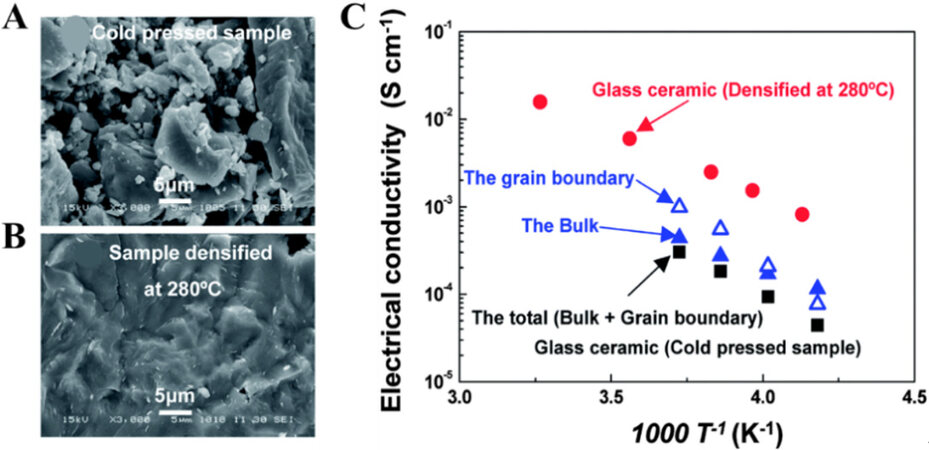
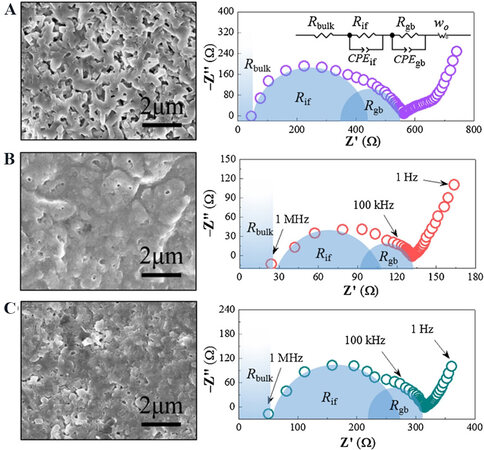
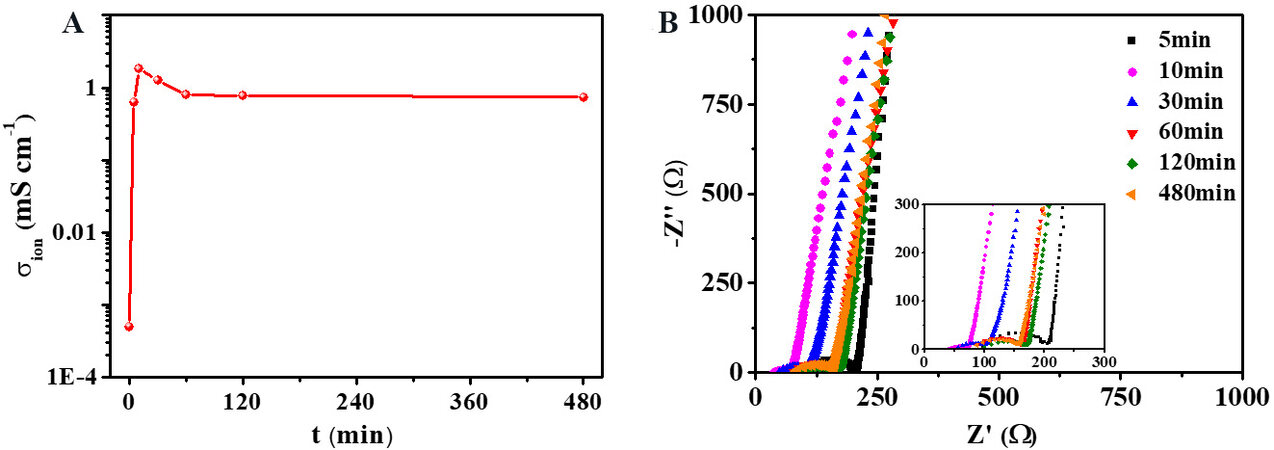
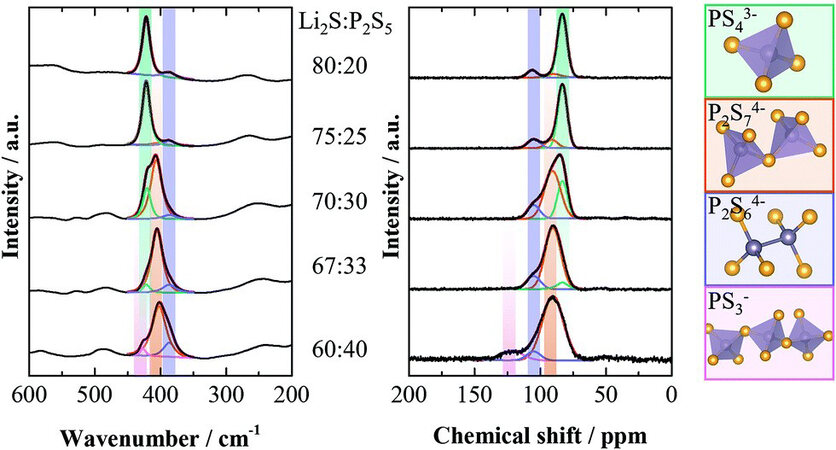
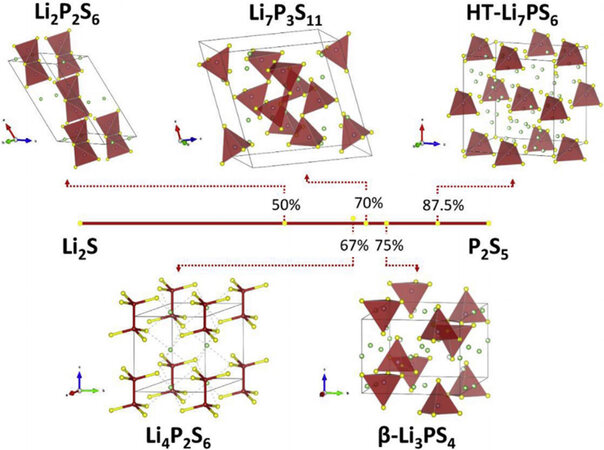
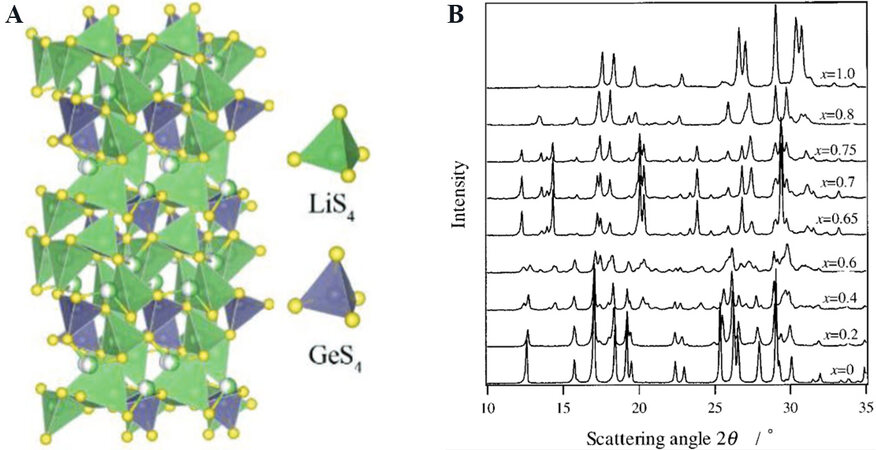
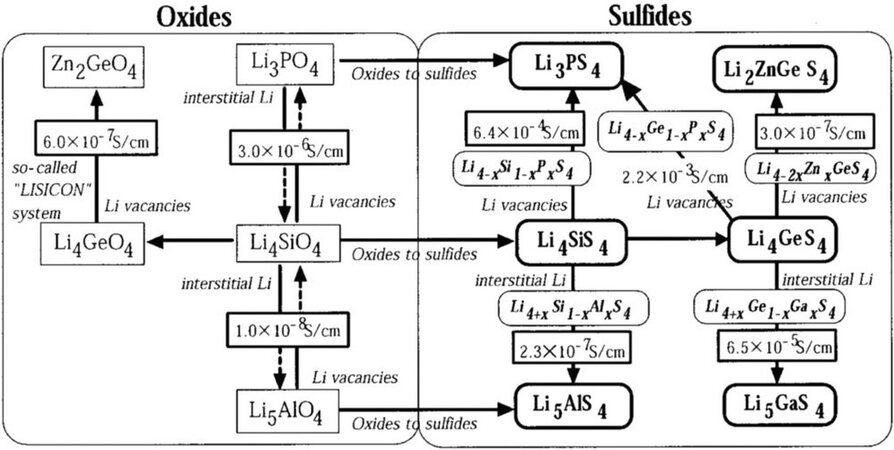
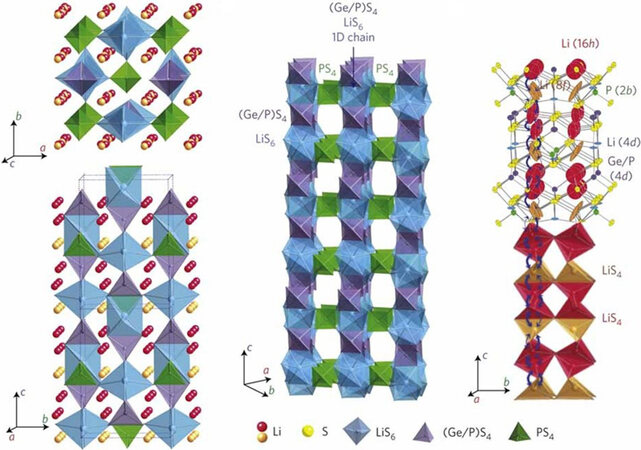
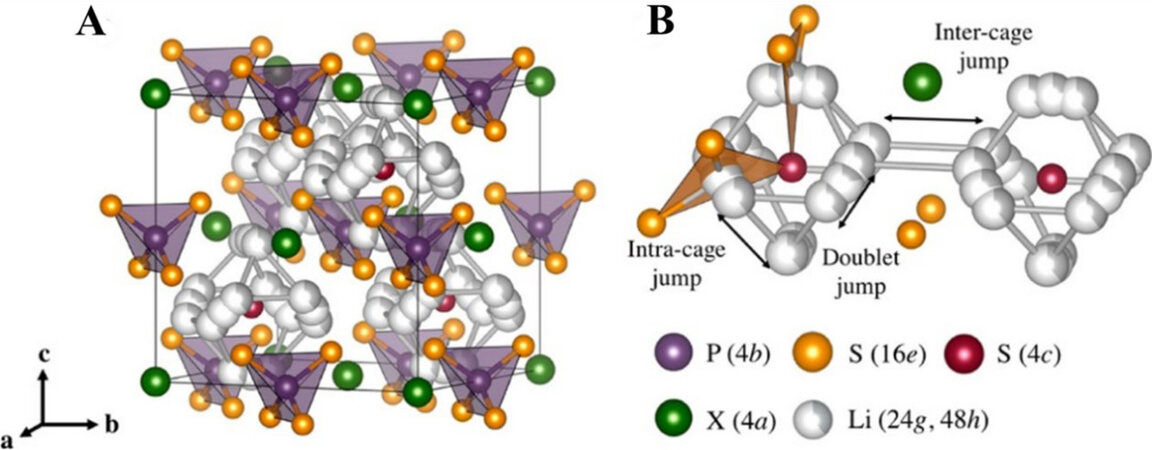
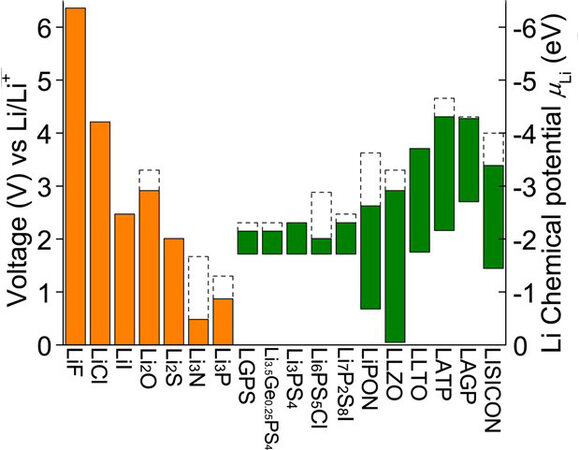
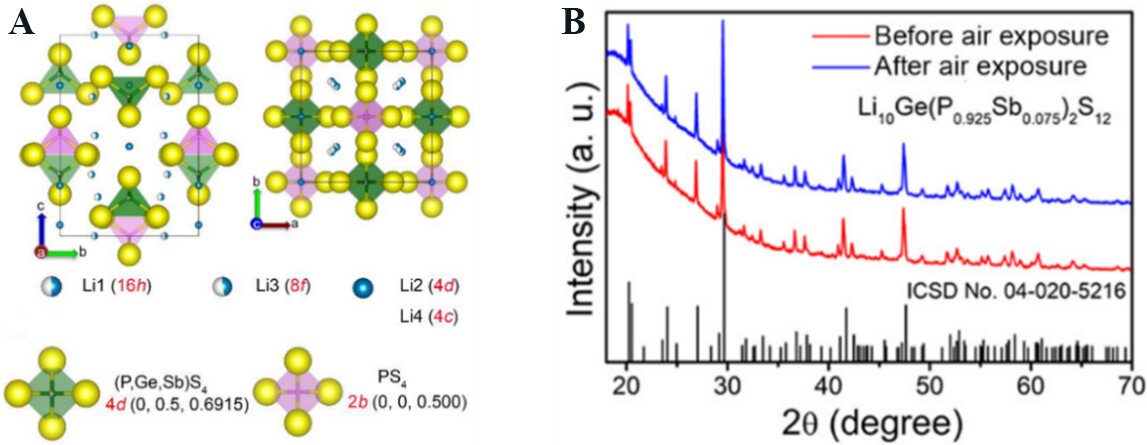
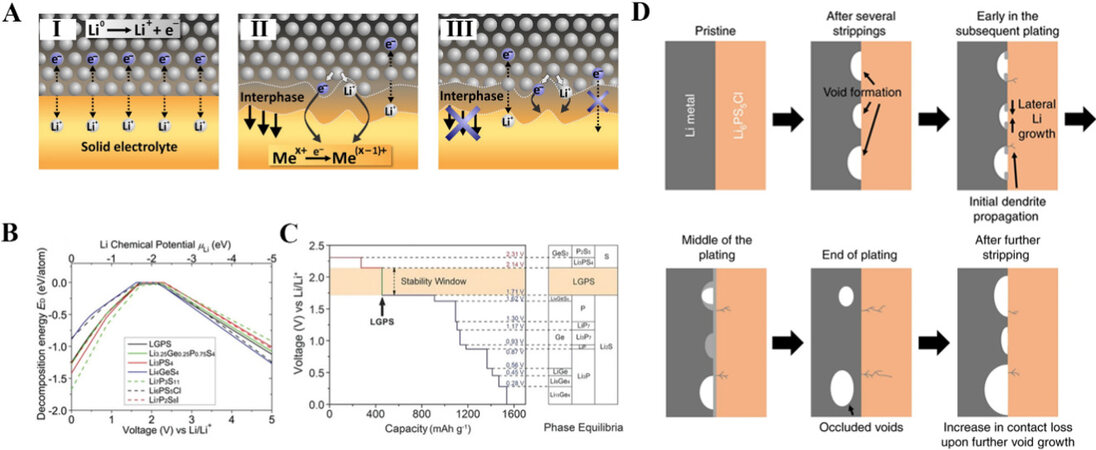
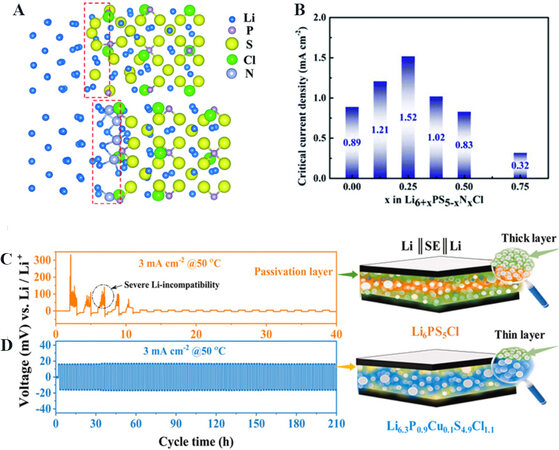
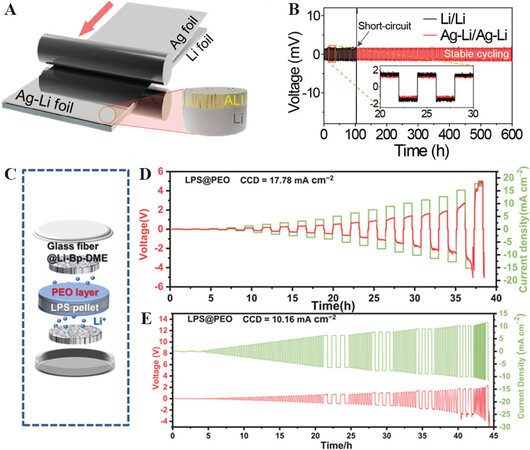
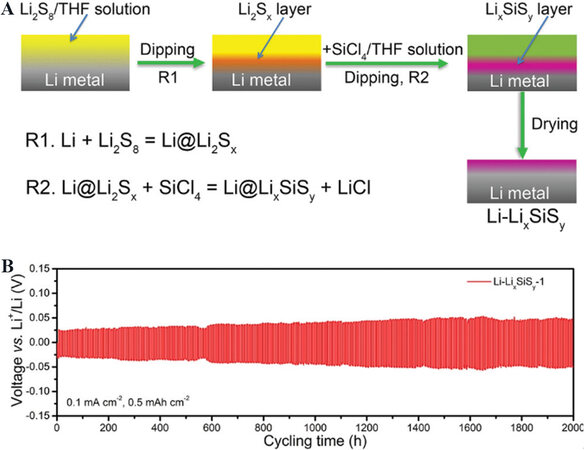
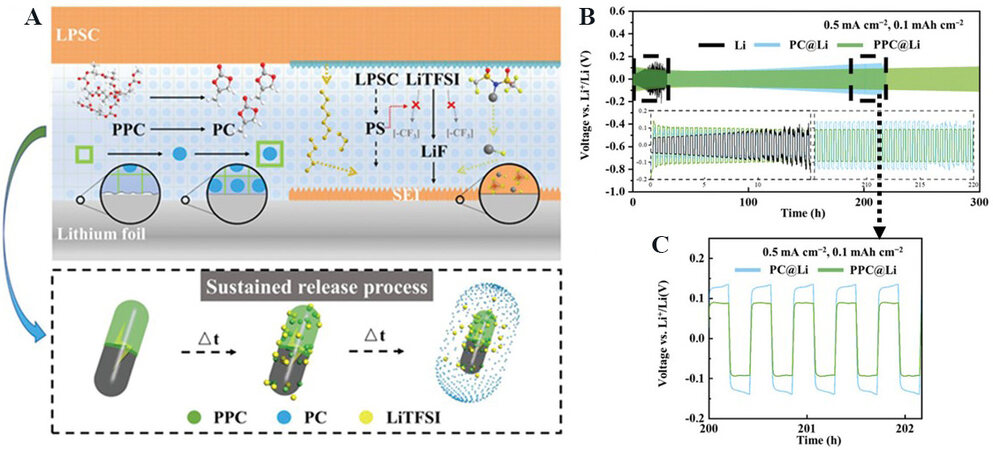
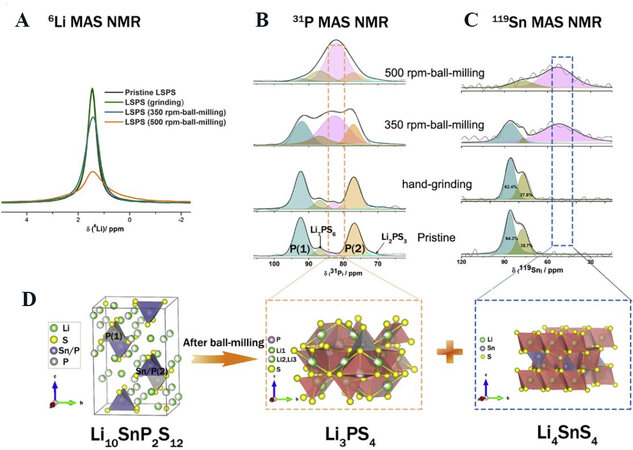
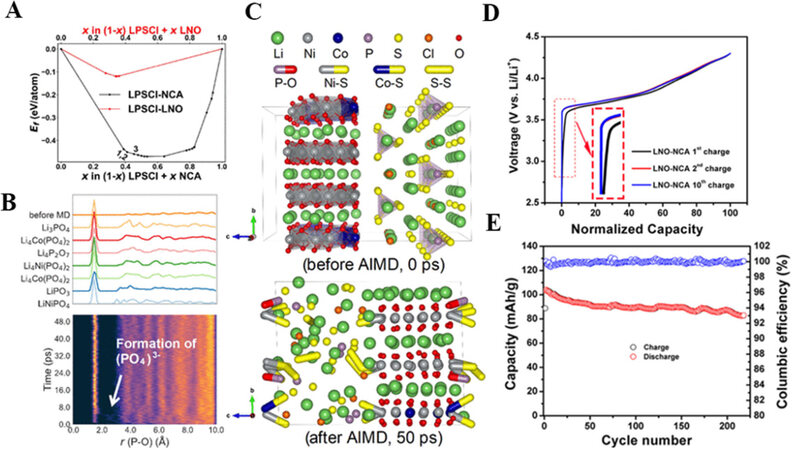












Comments
Comments must be written in English. Spam, offensive content, impersonation, and private information will not be permitted. If any comment is reported and identified as inappropriate content by OAE staff, the comment will be removed without notice. If you have any queries or need any help, please contact us at support@oaepublish.com.